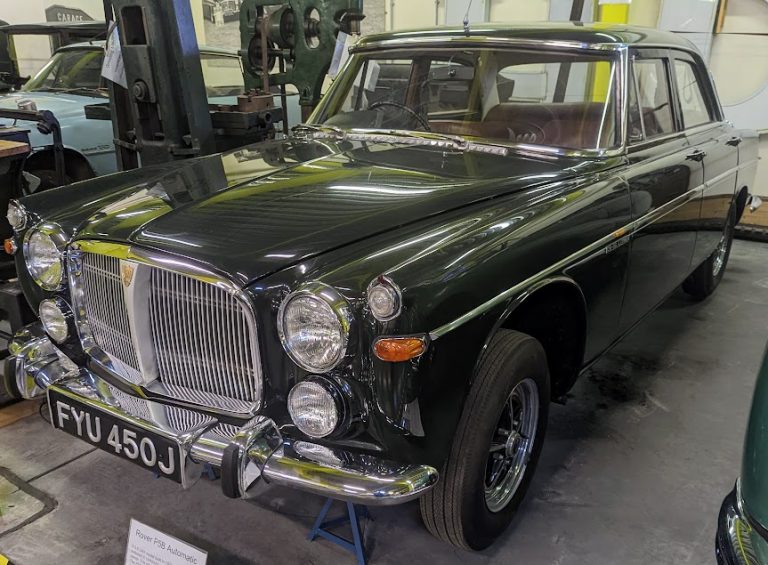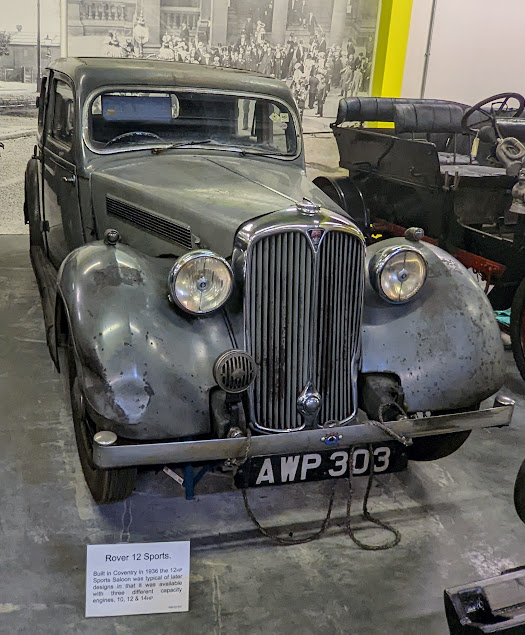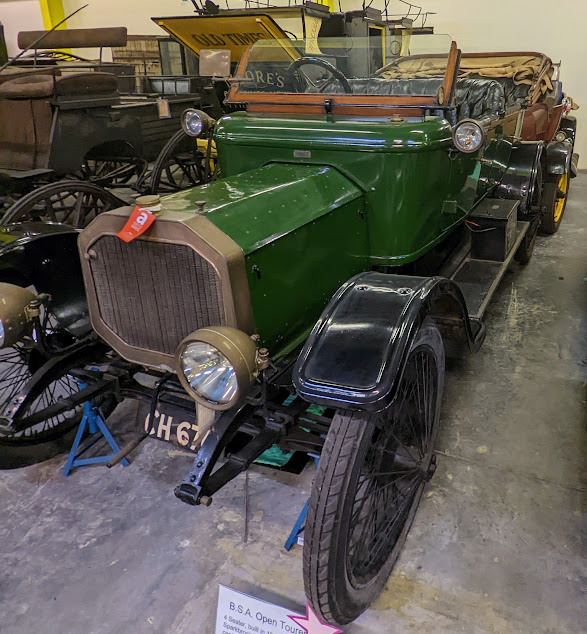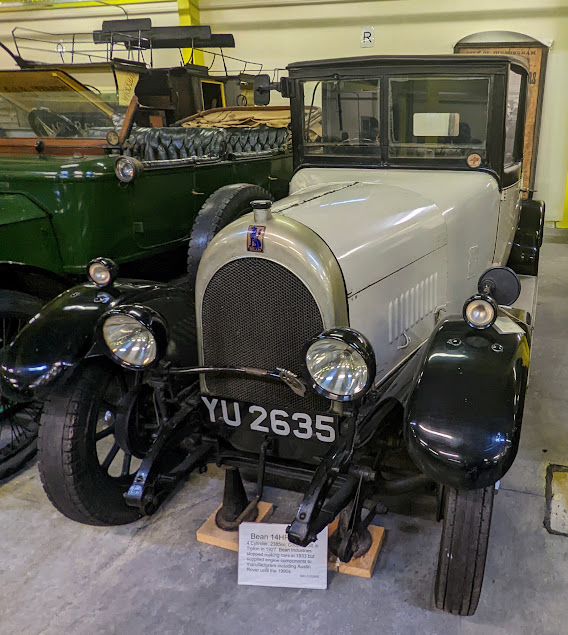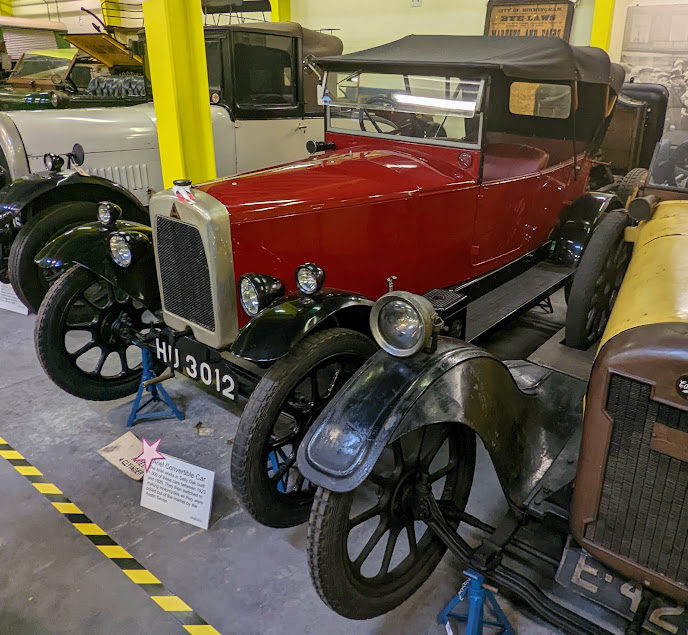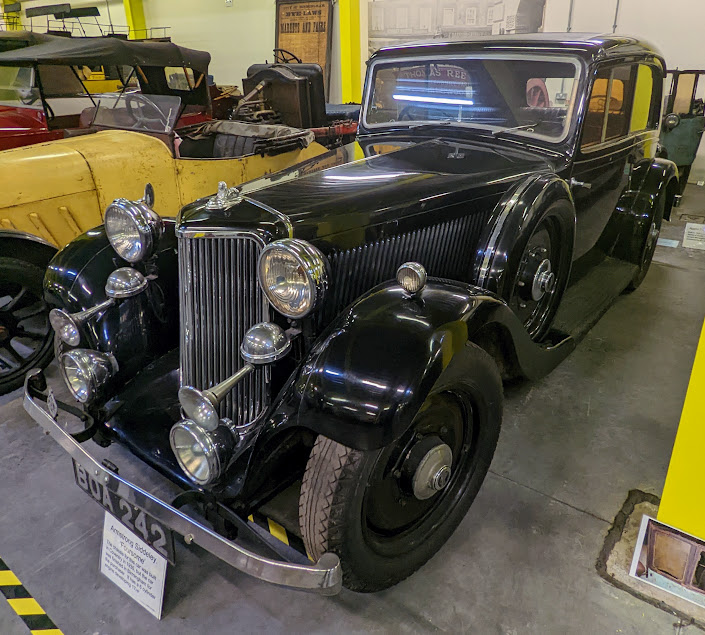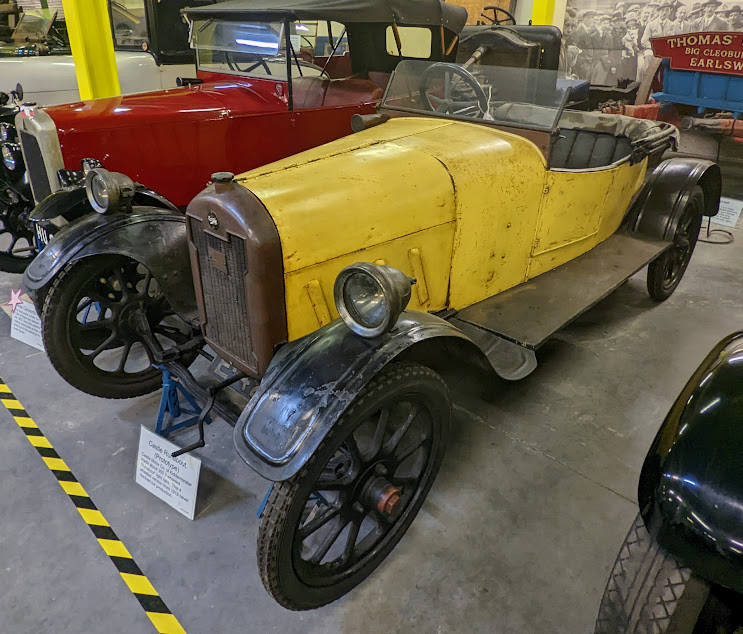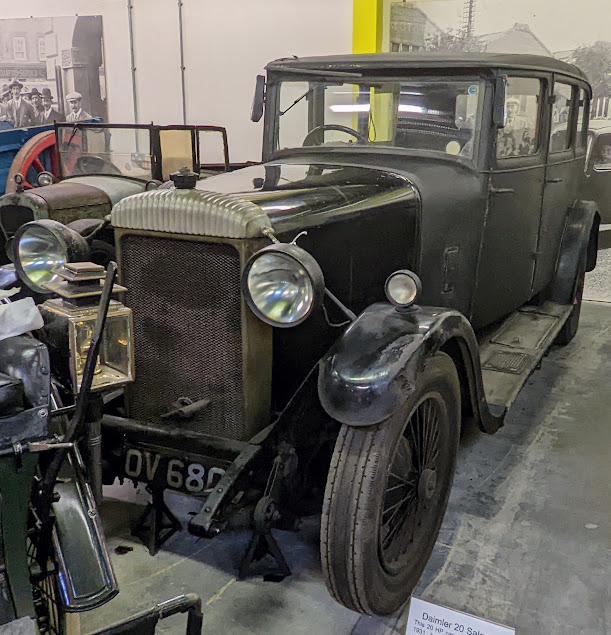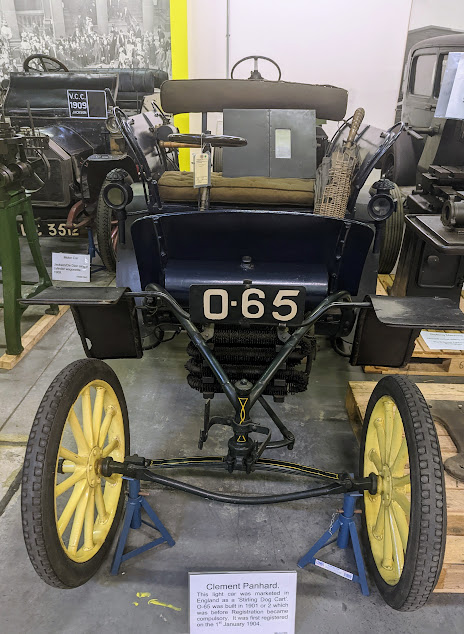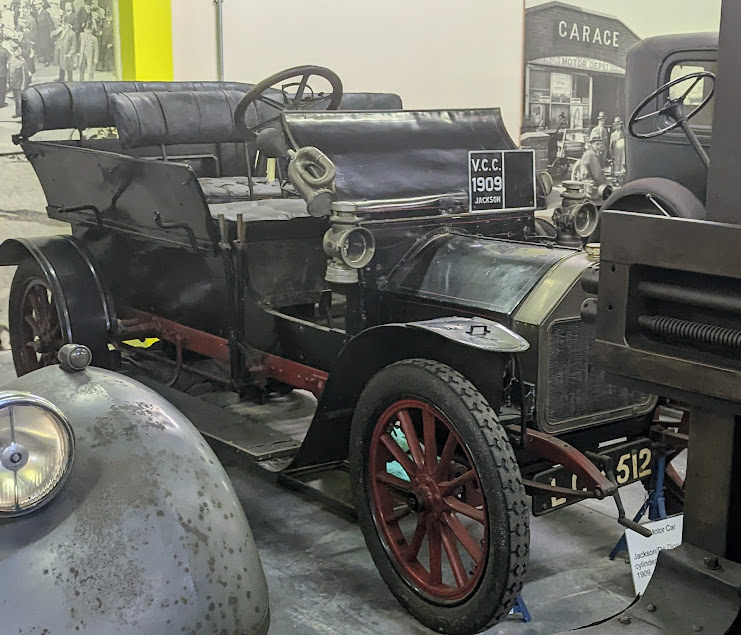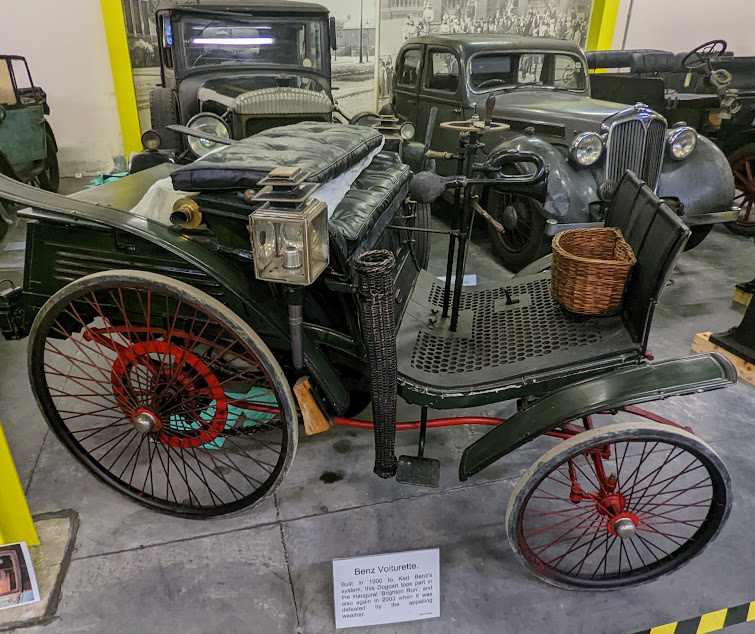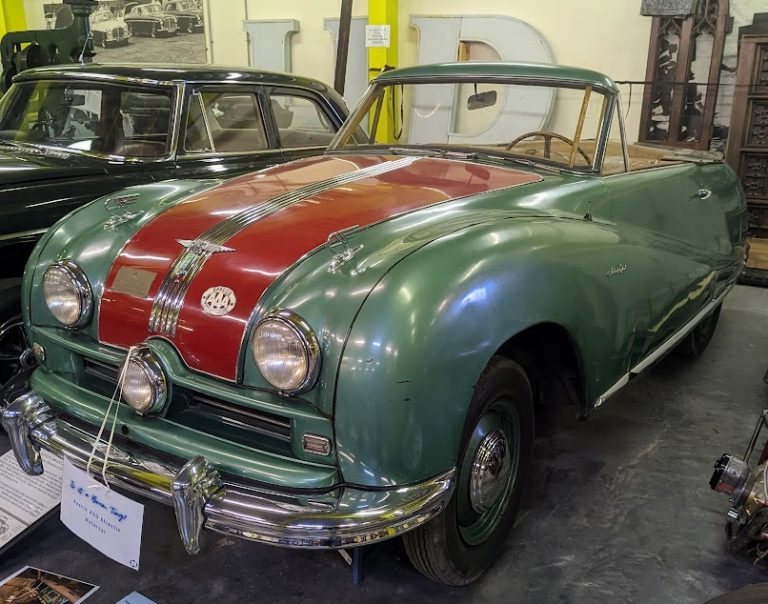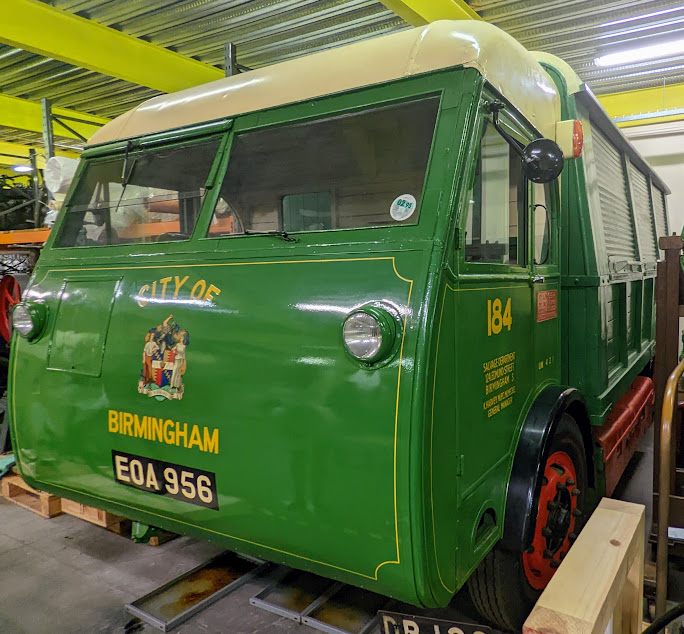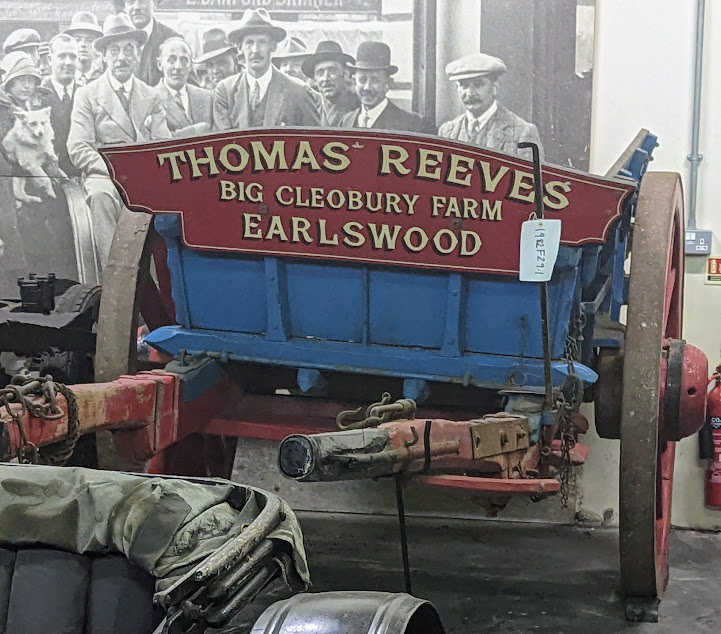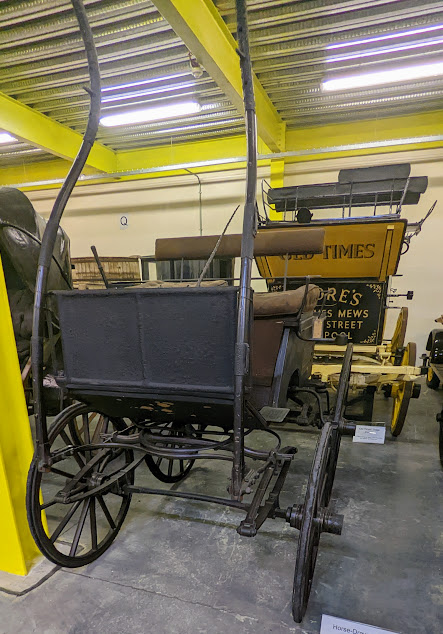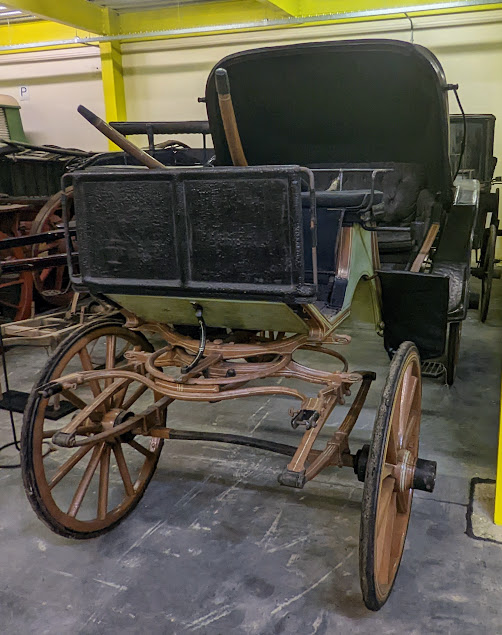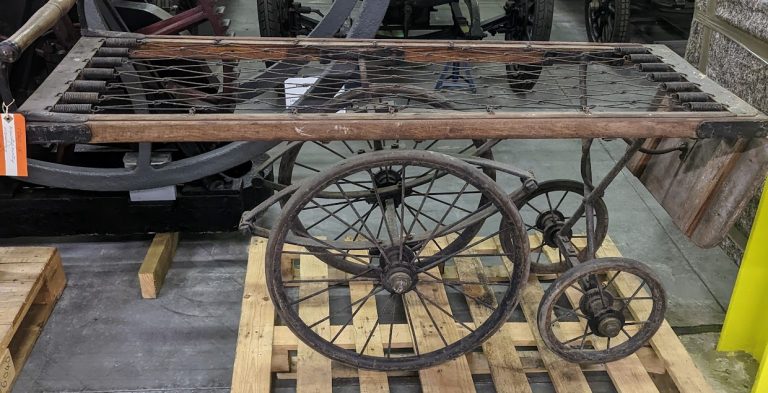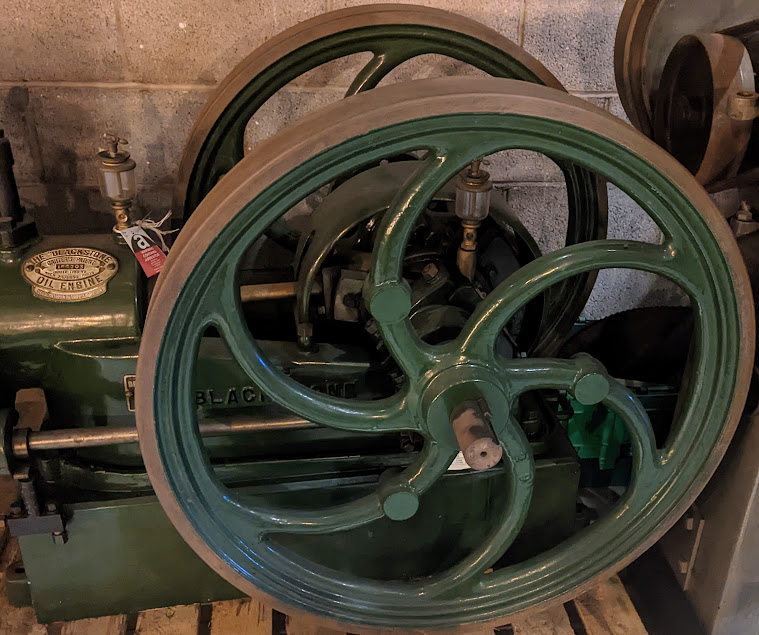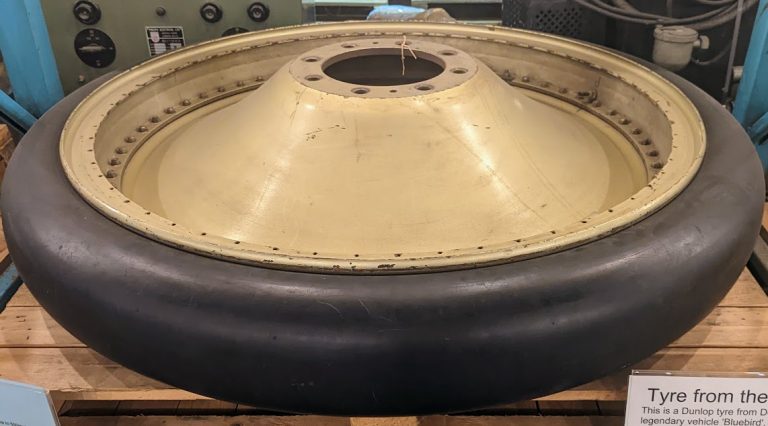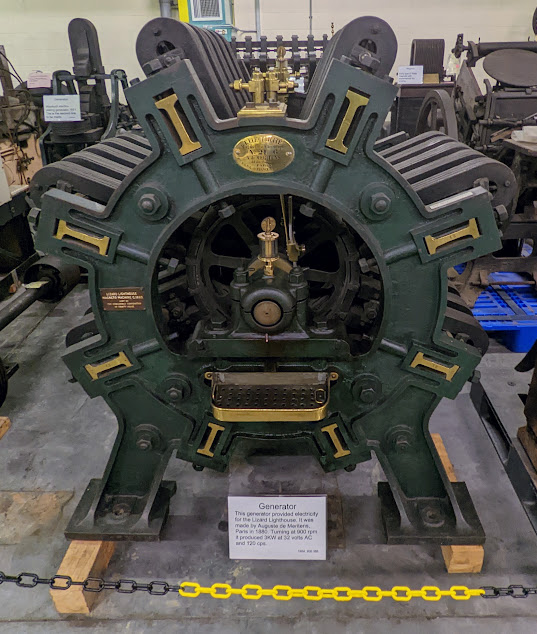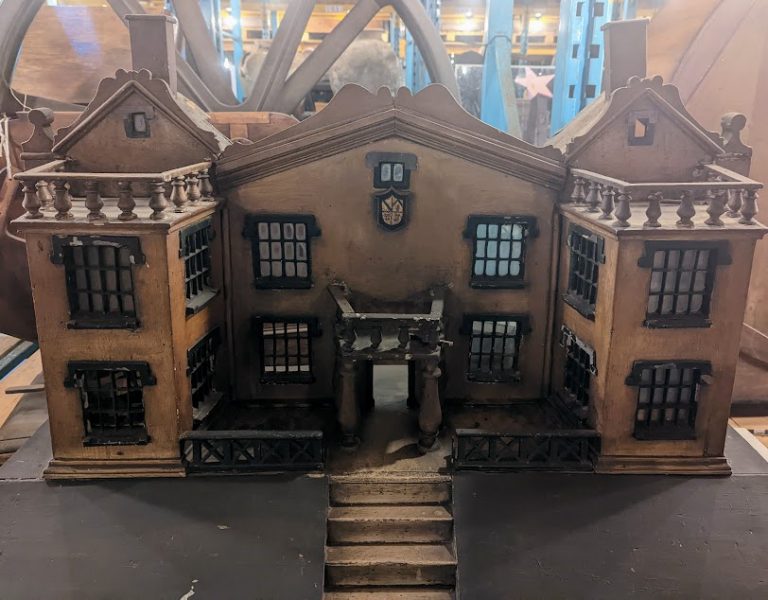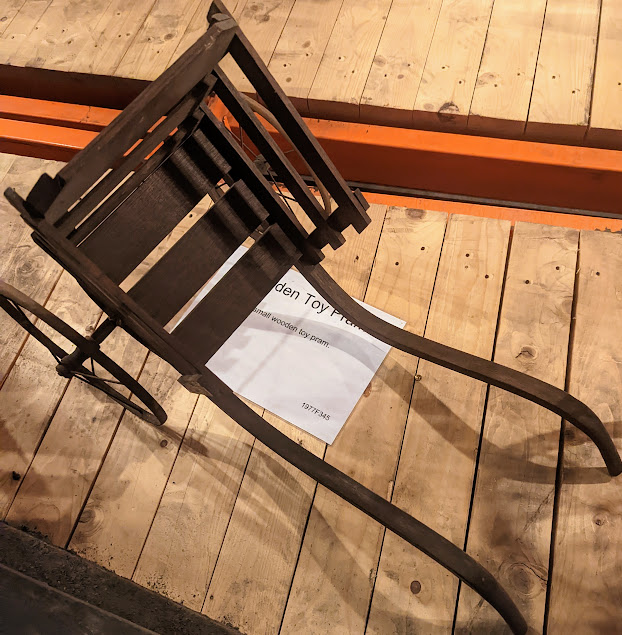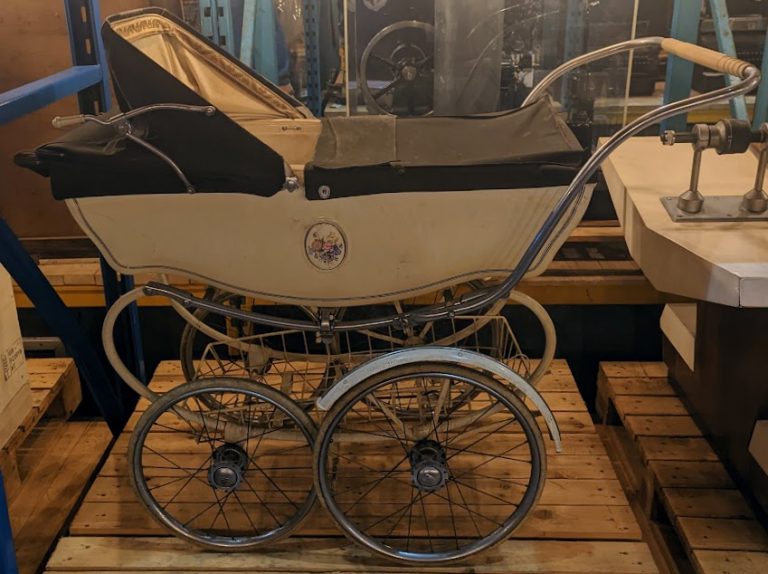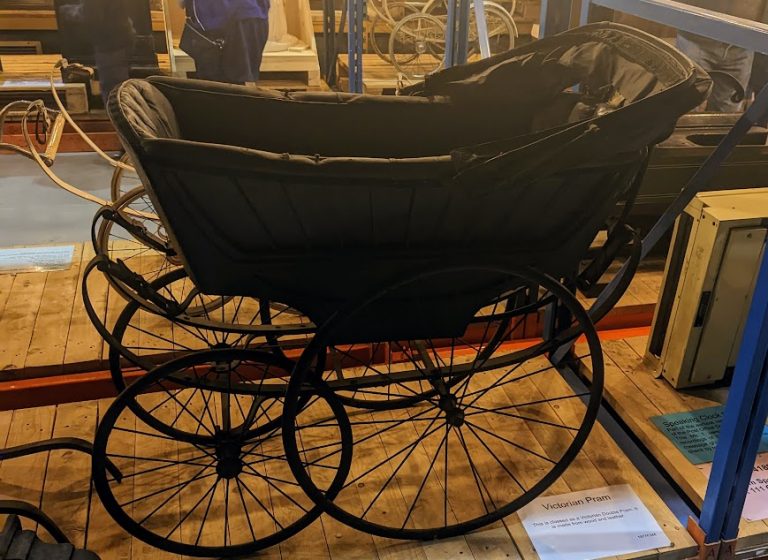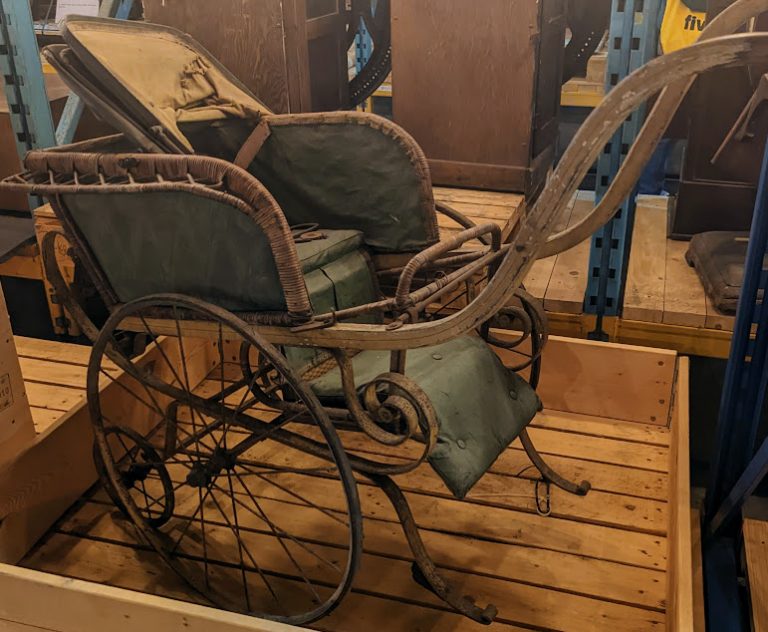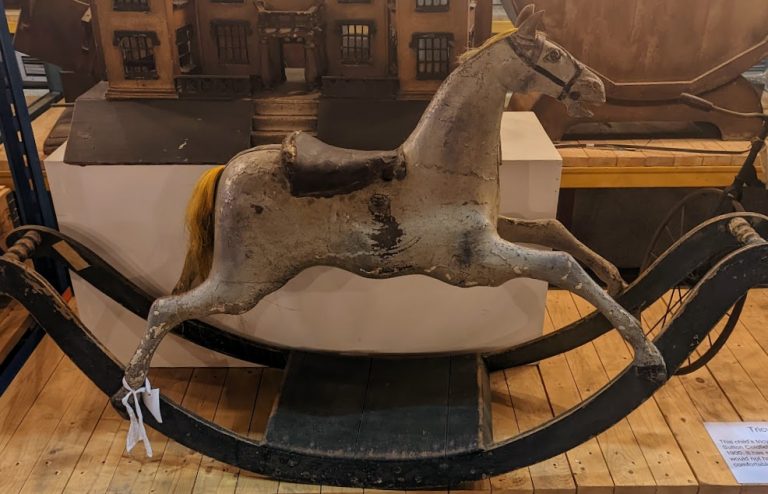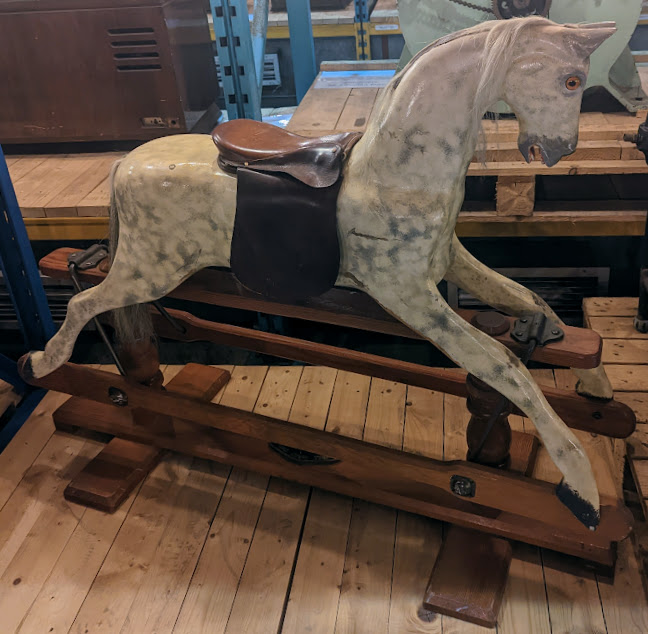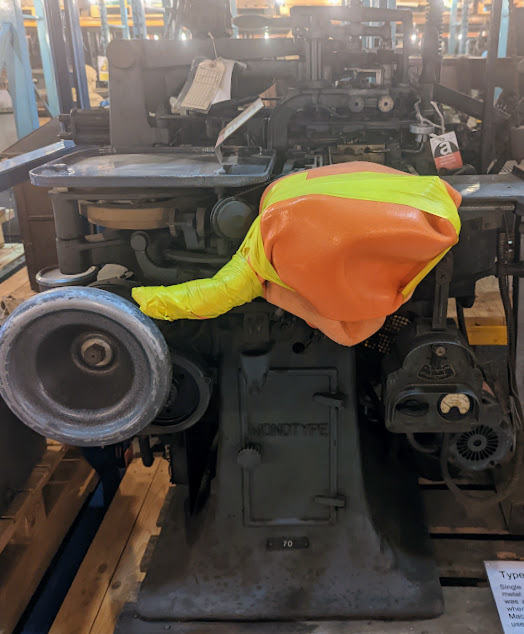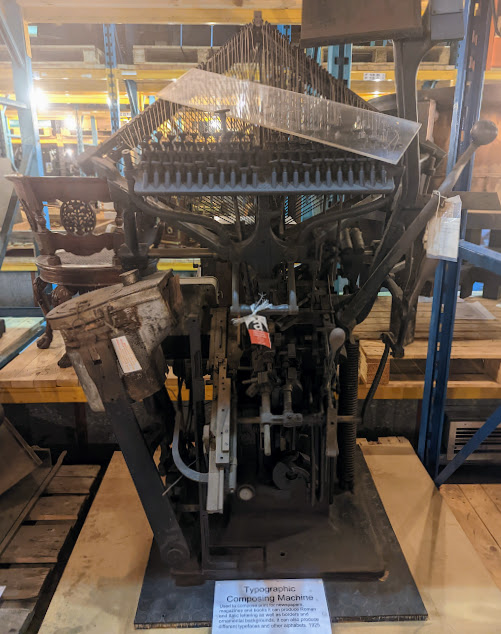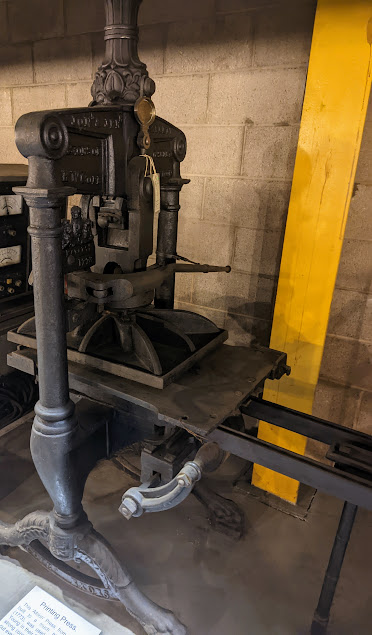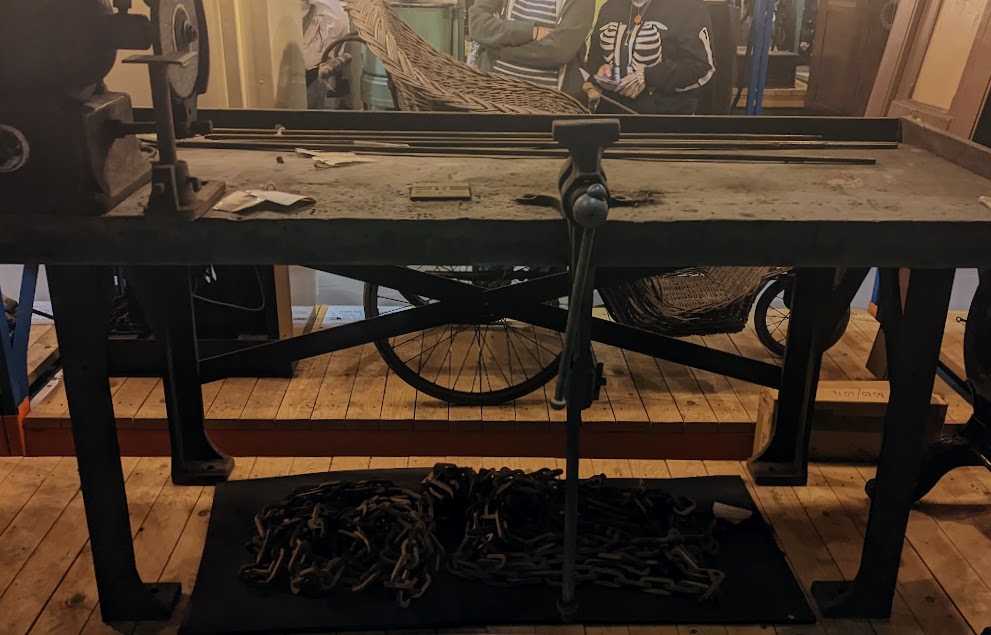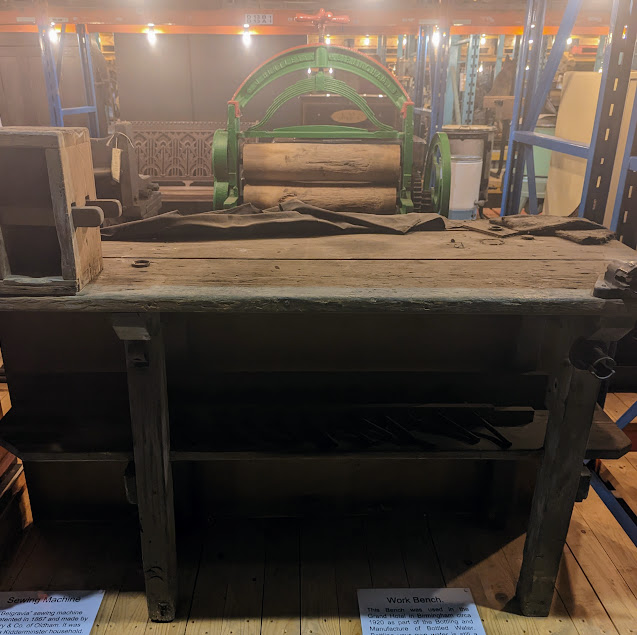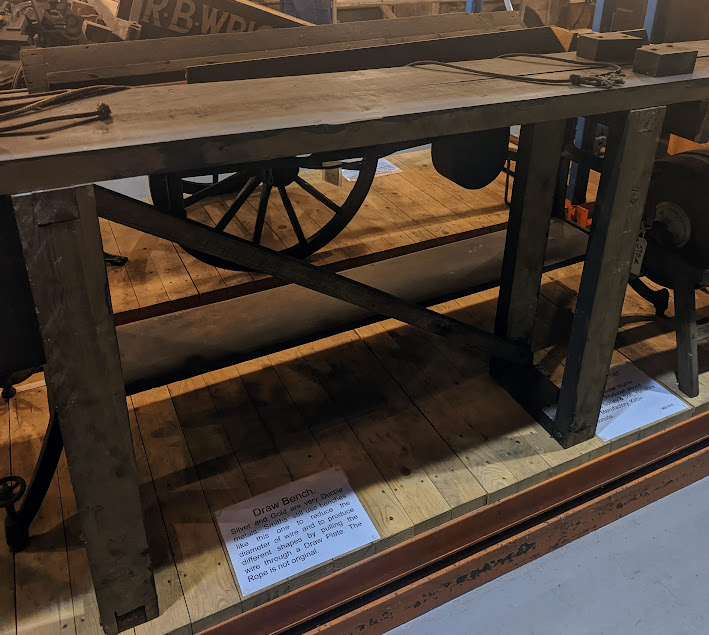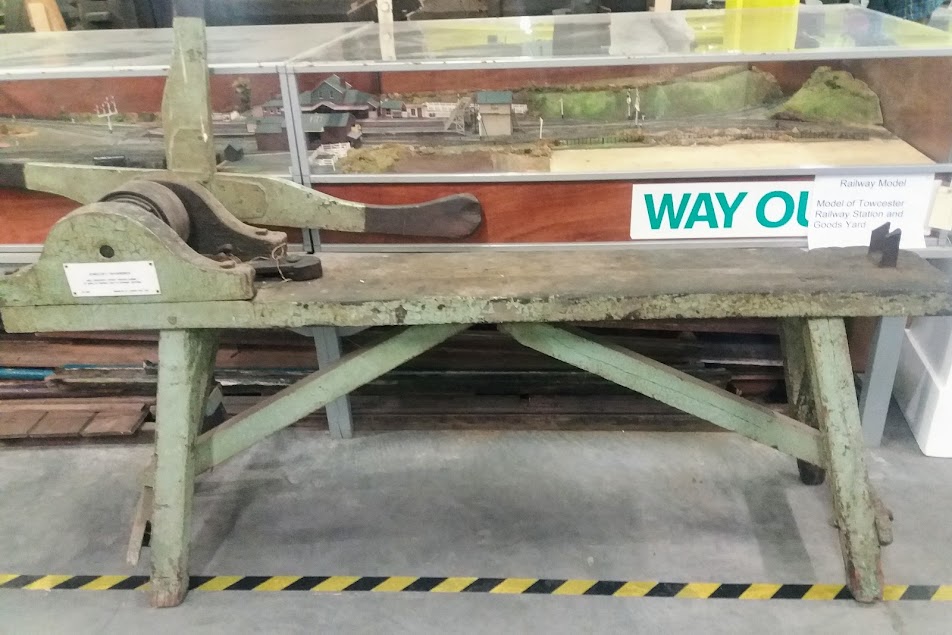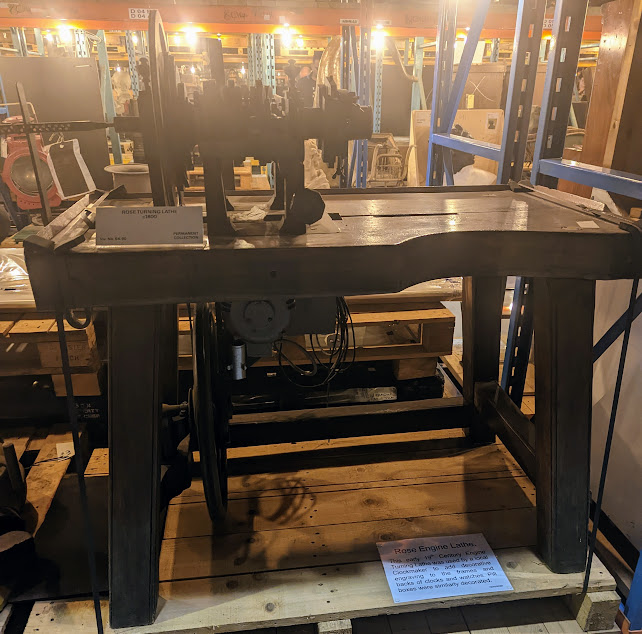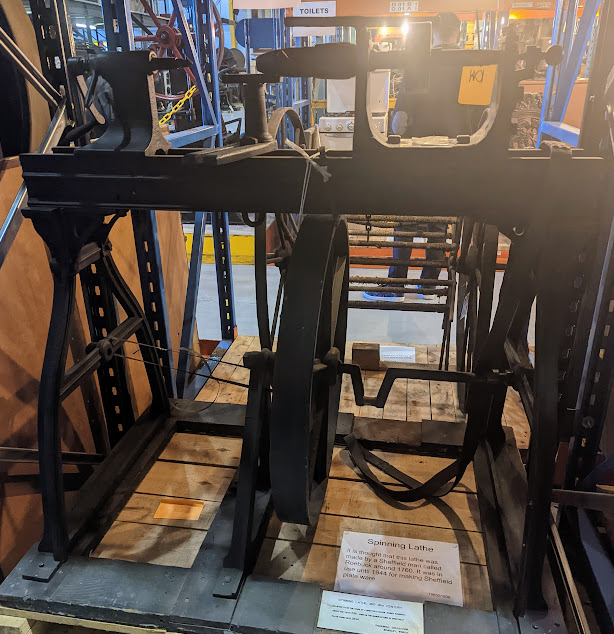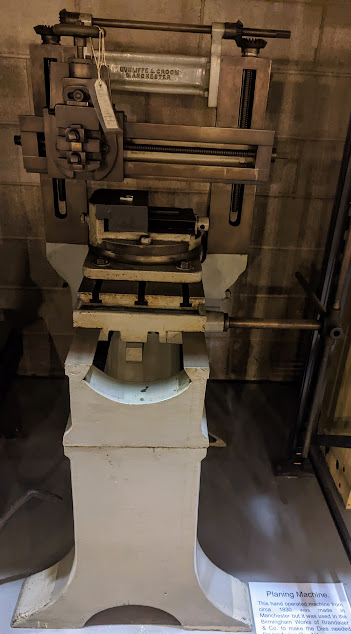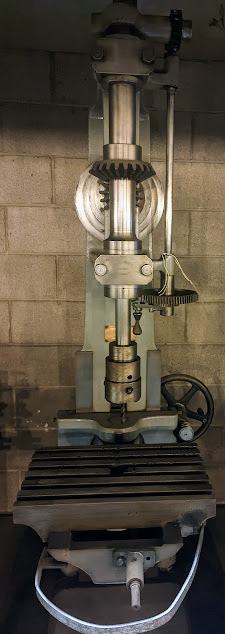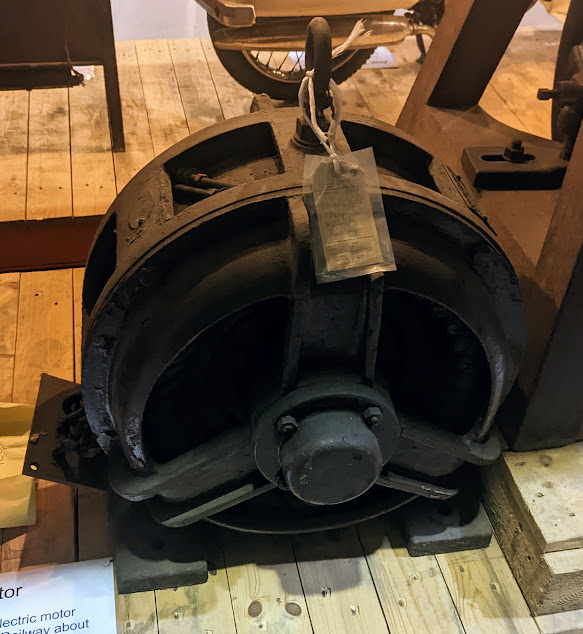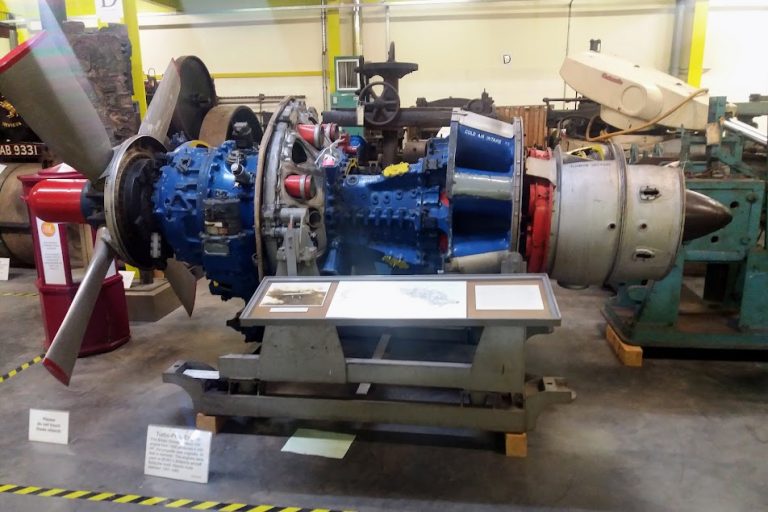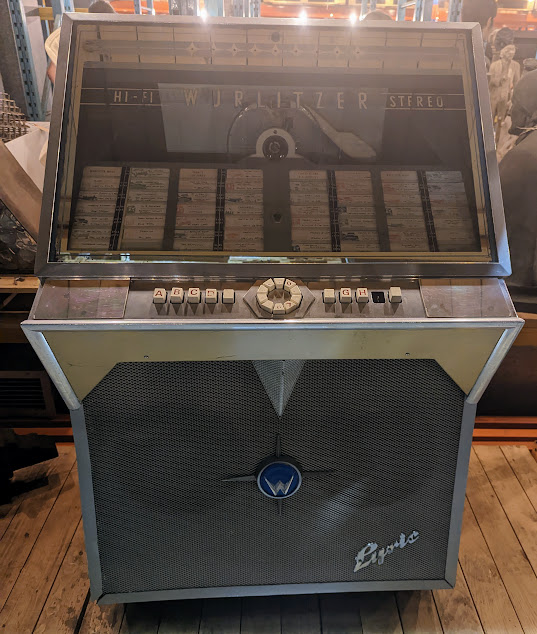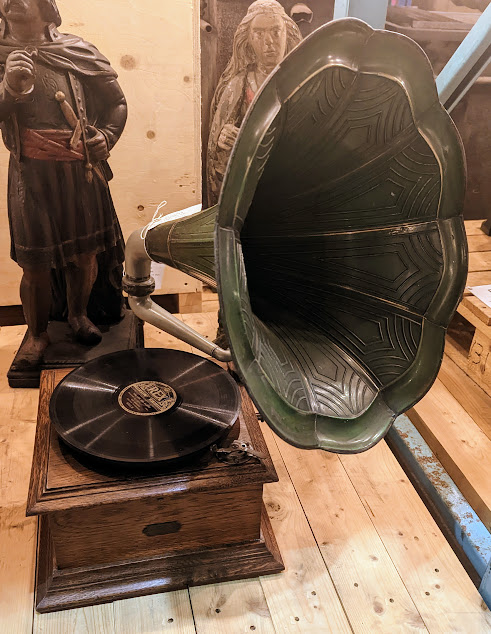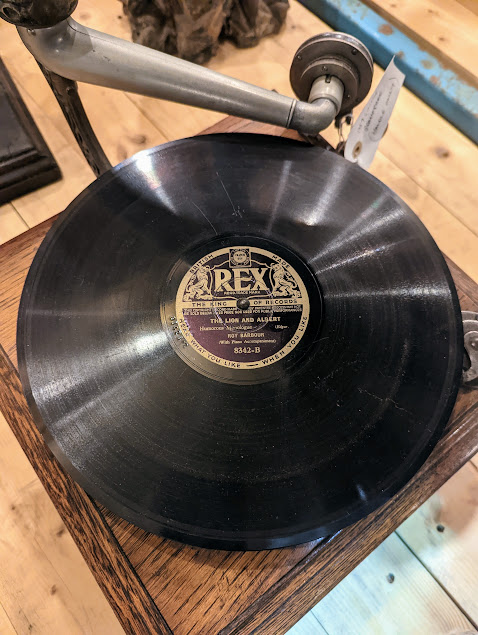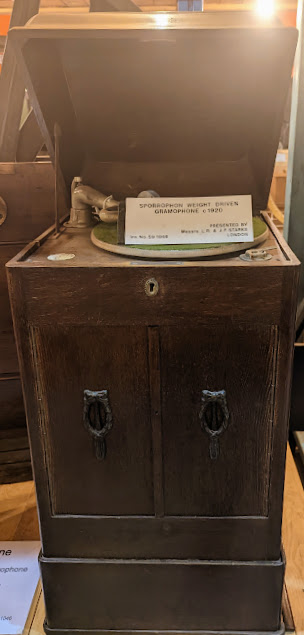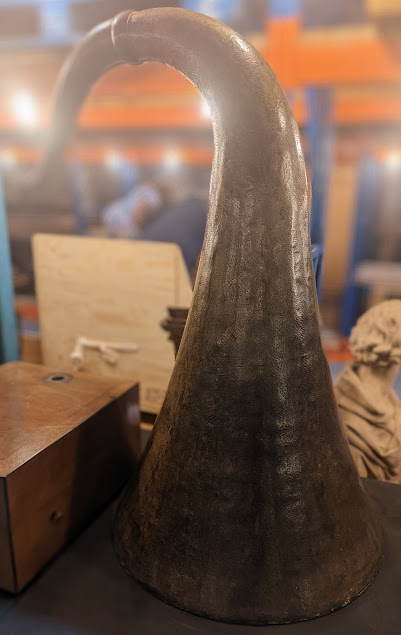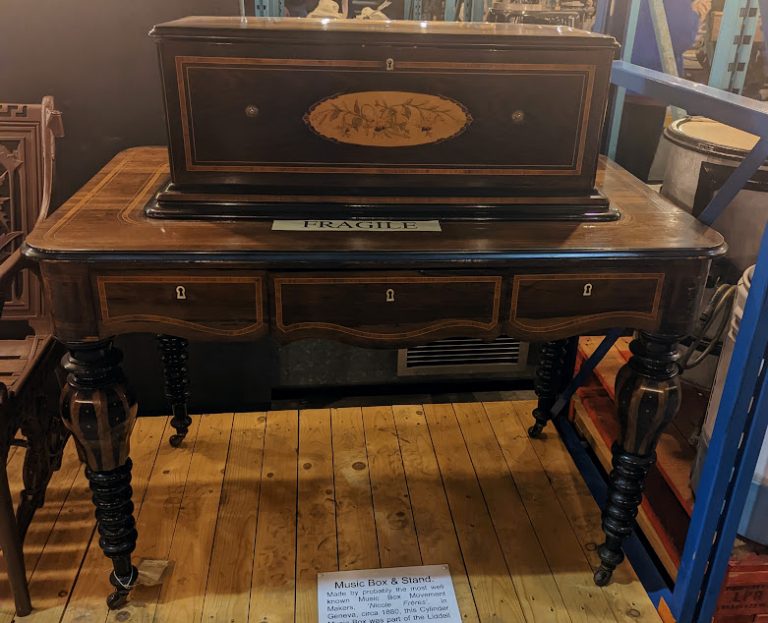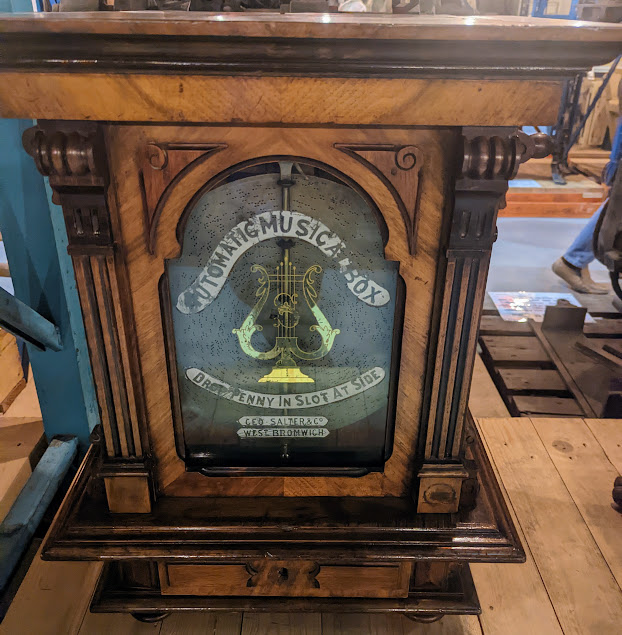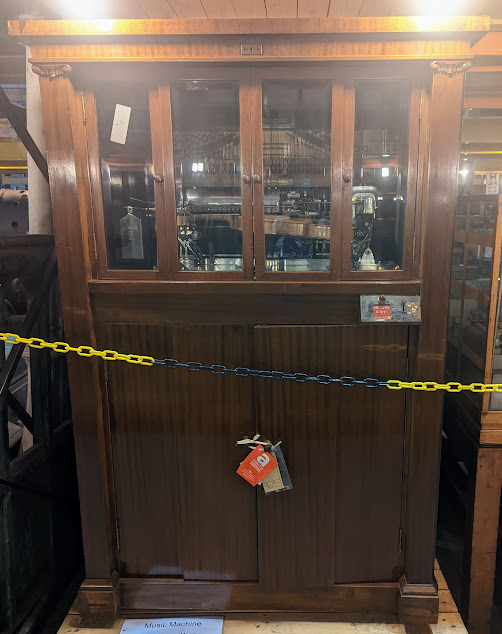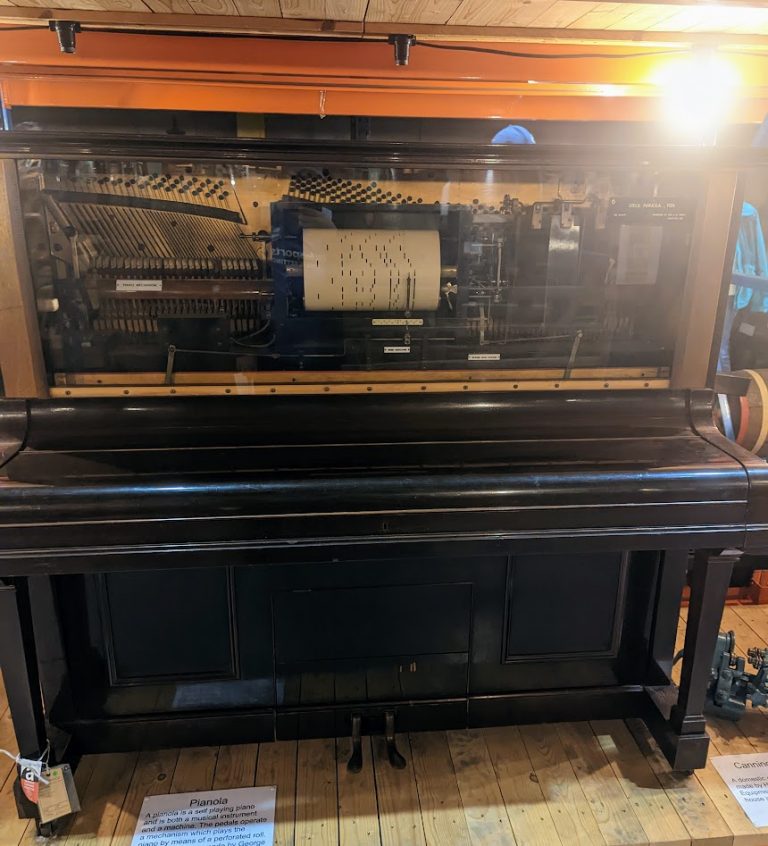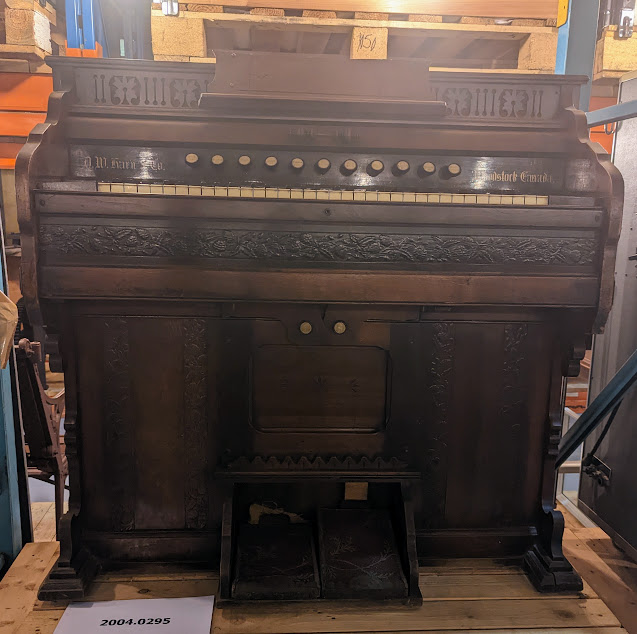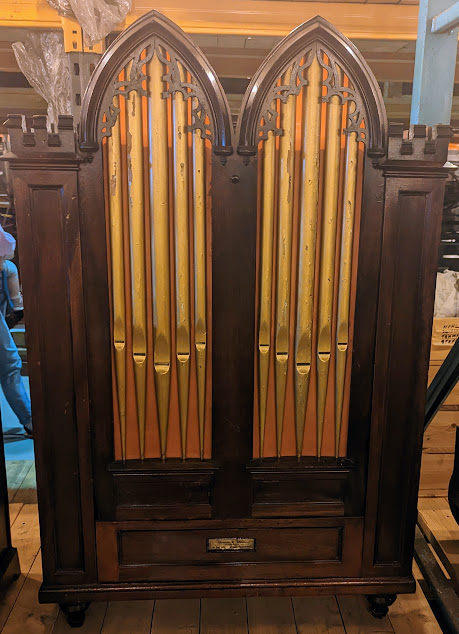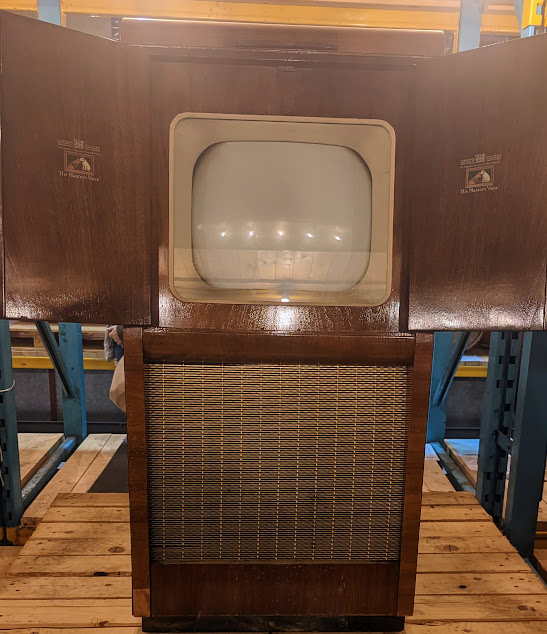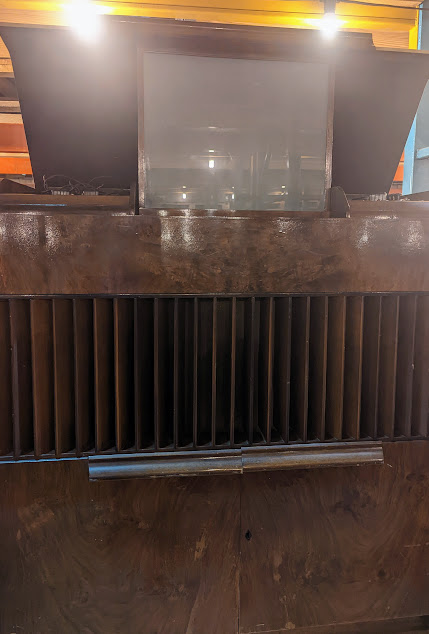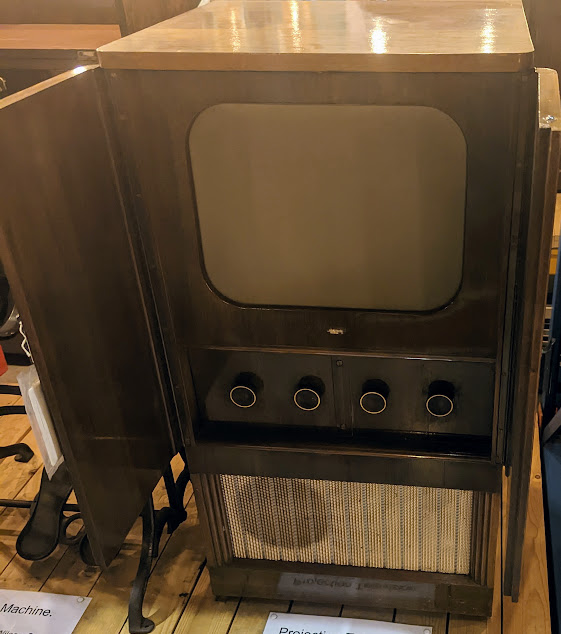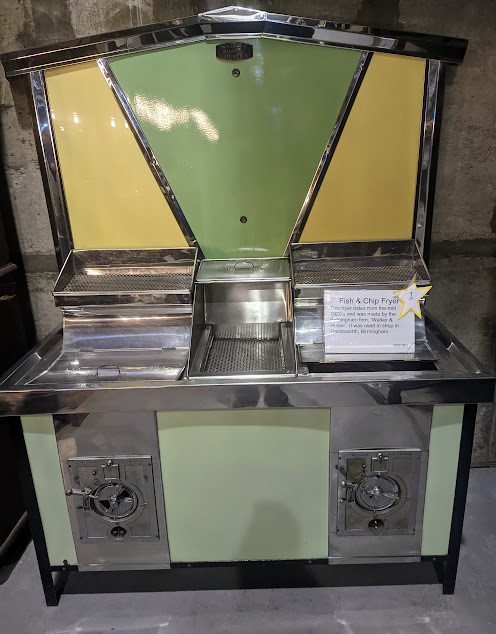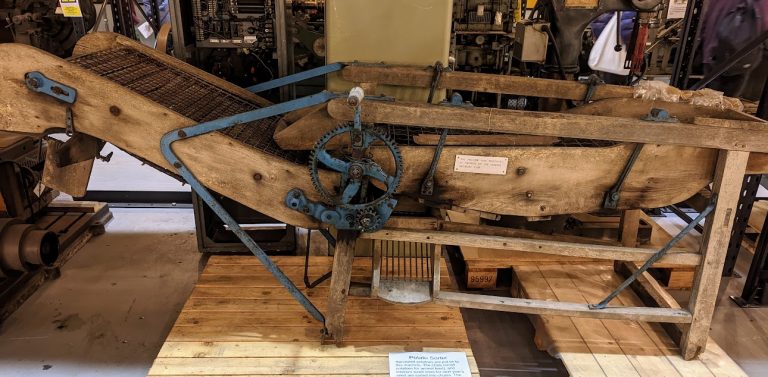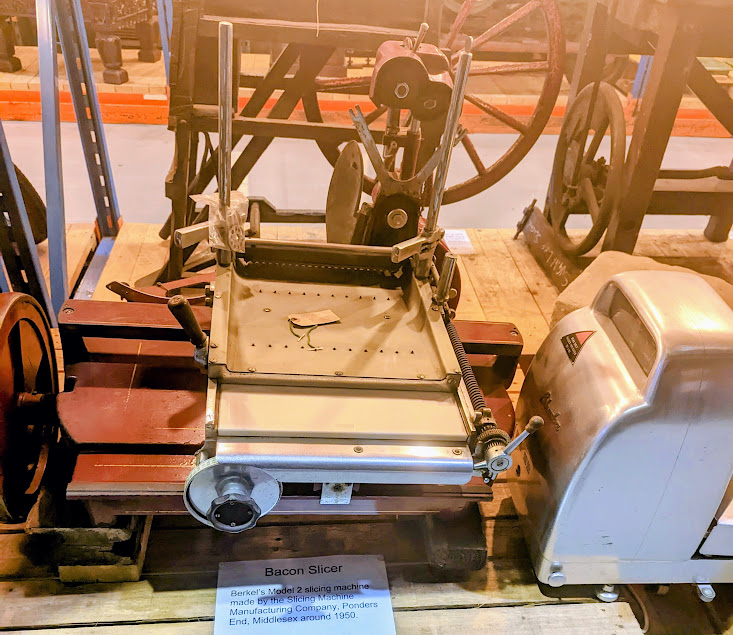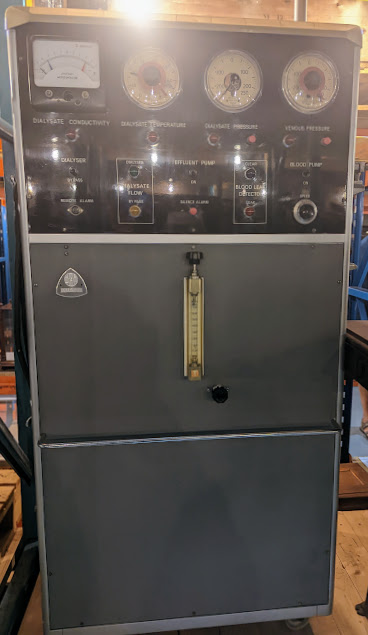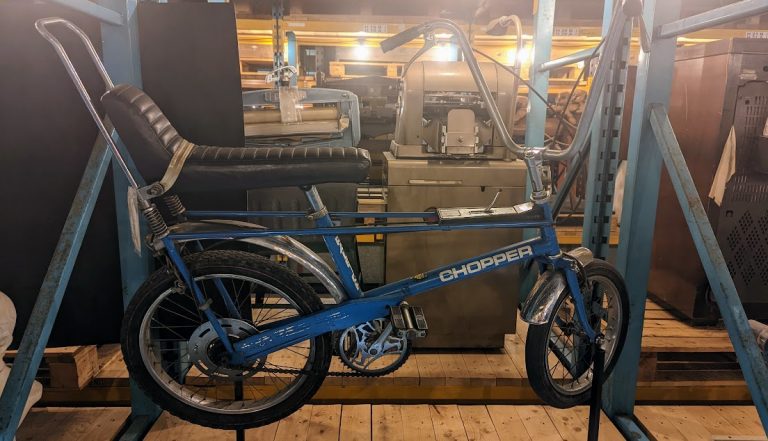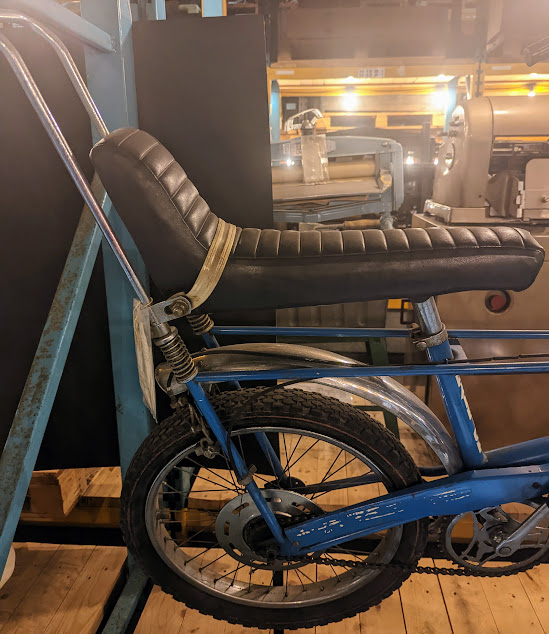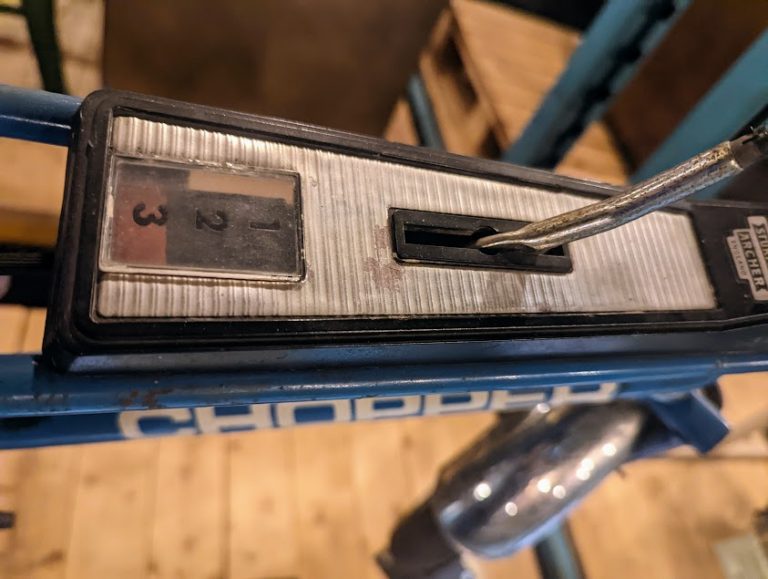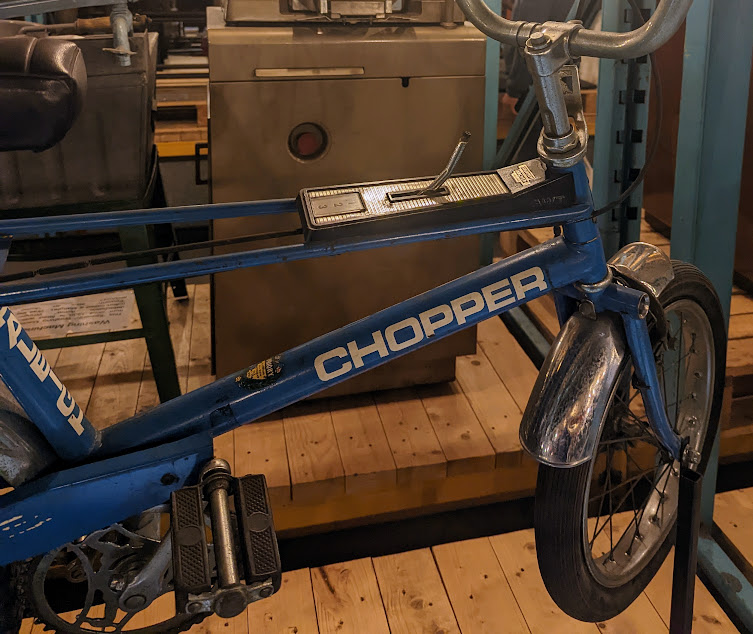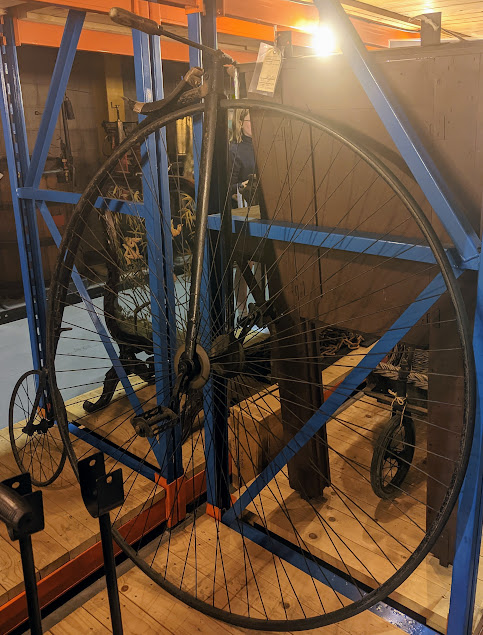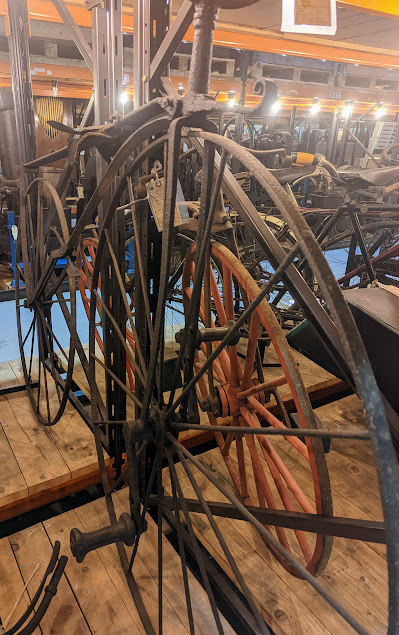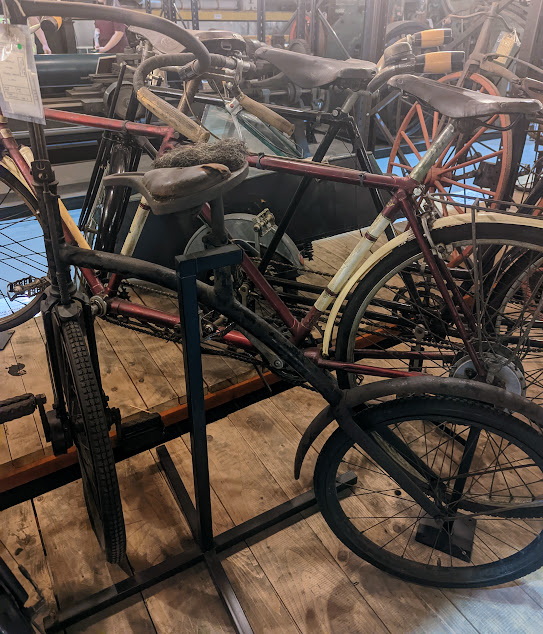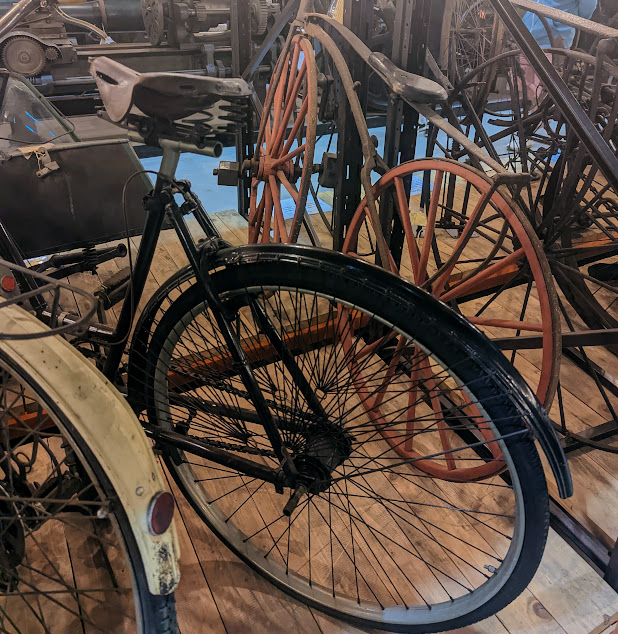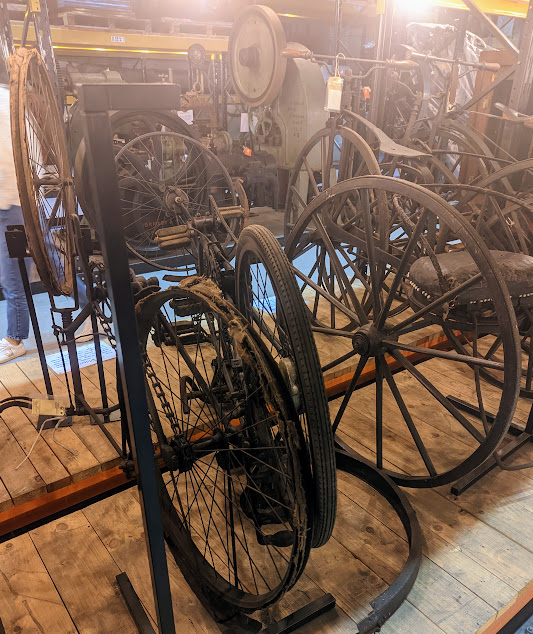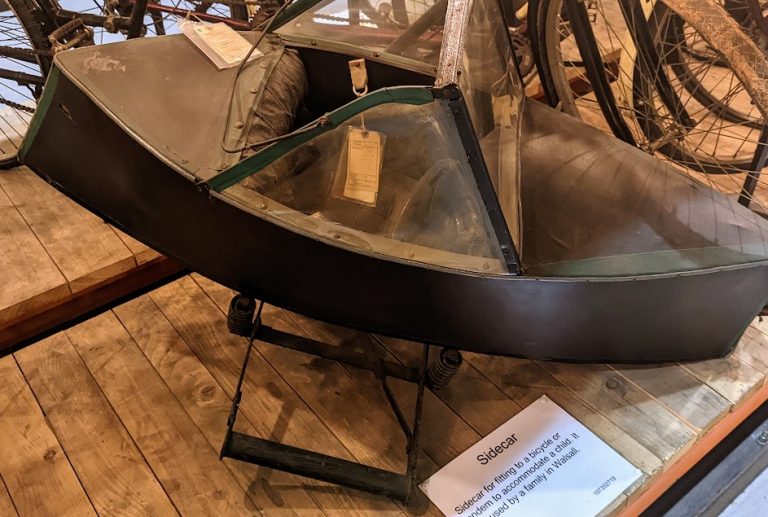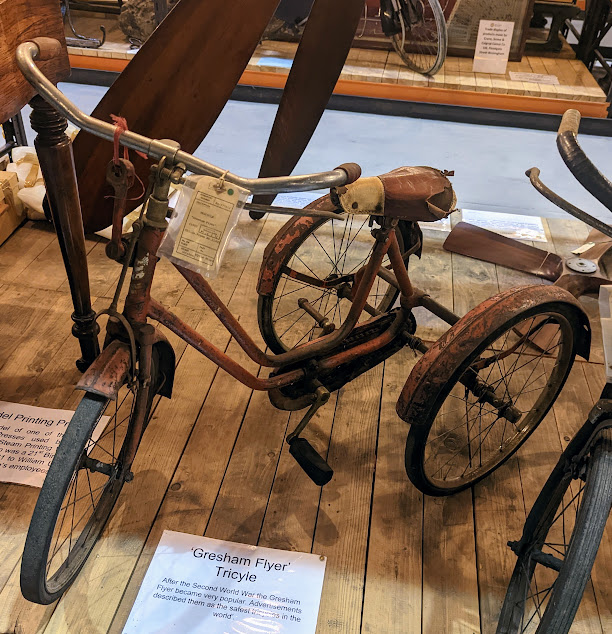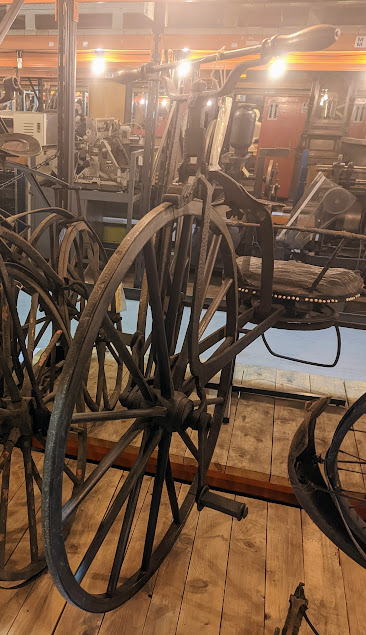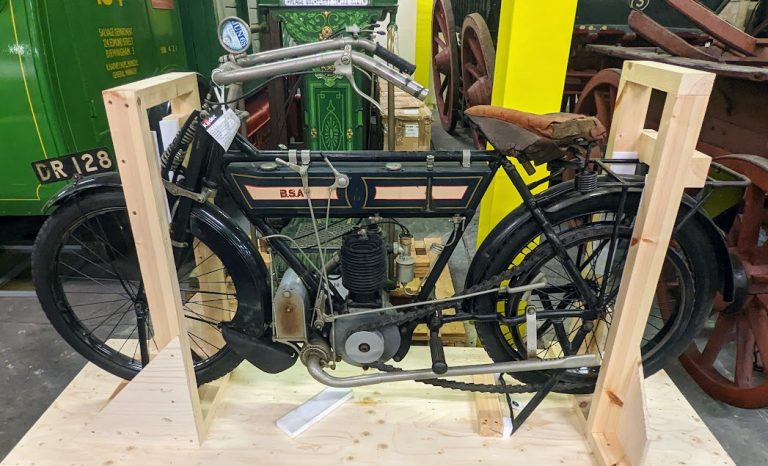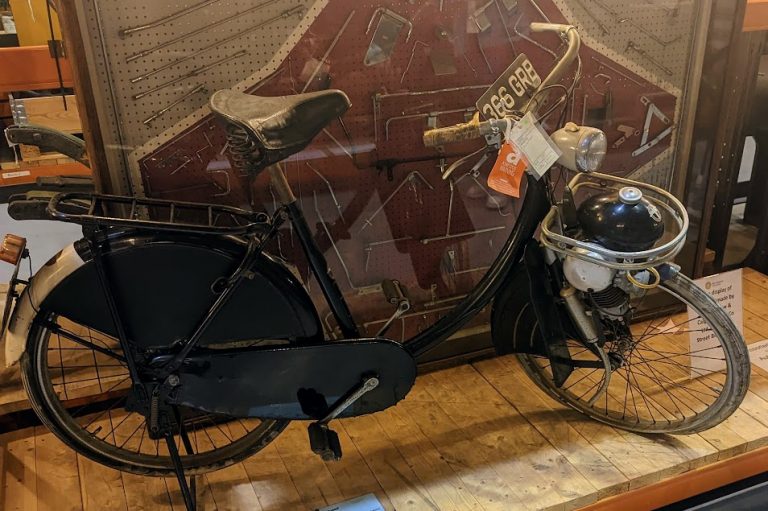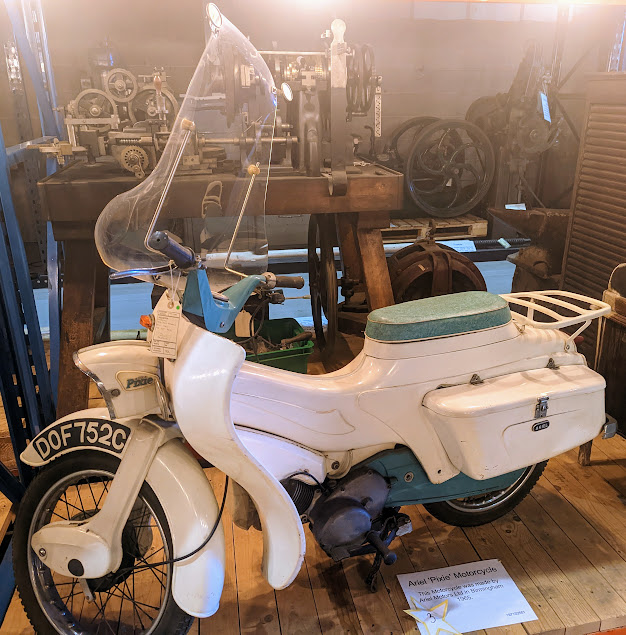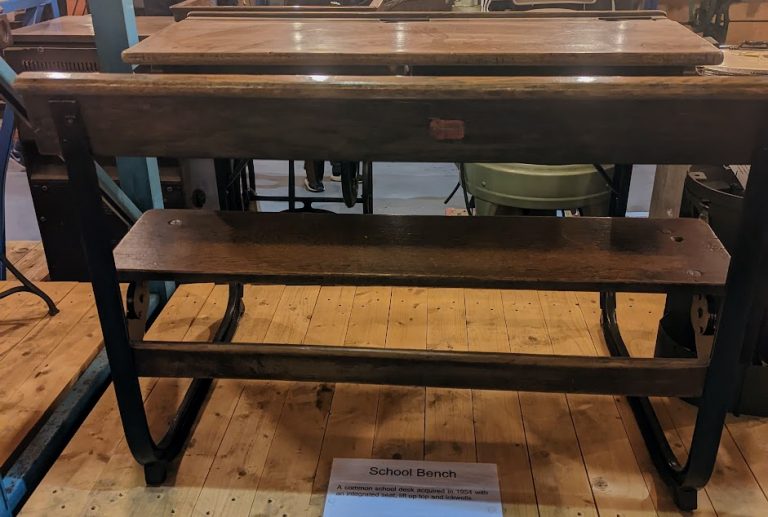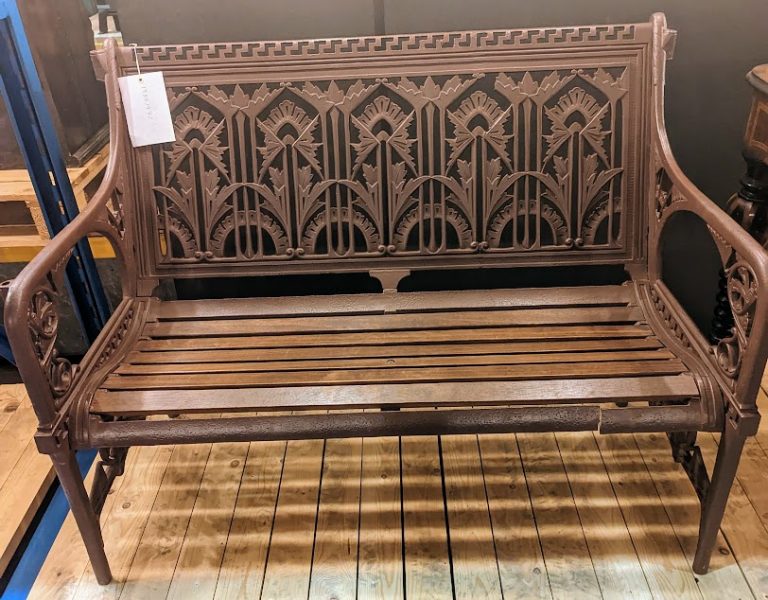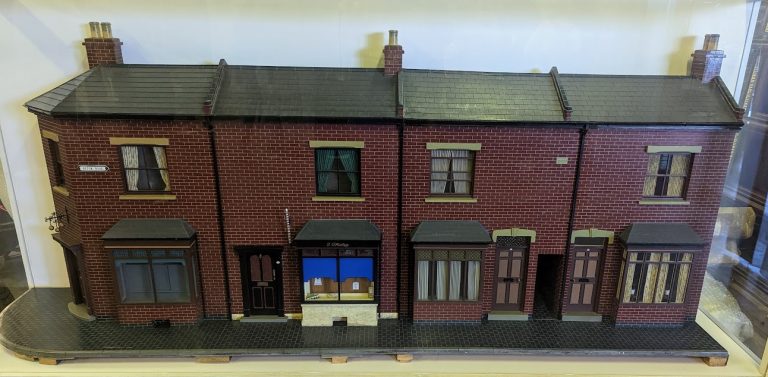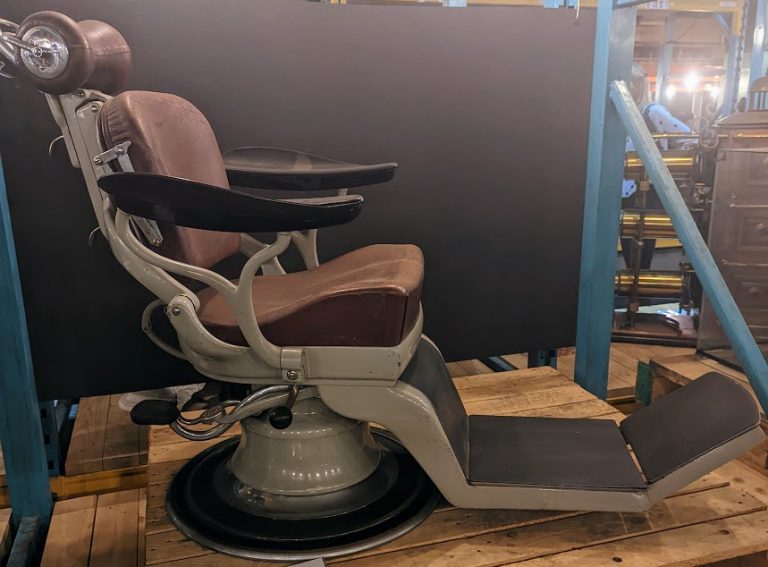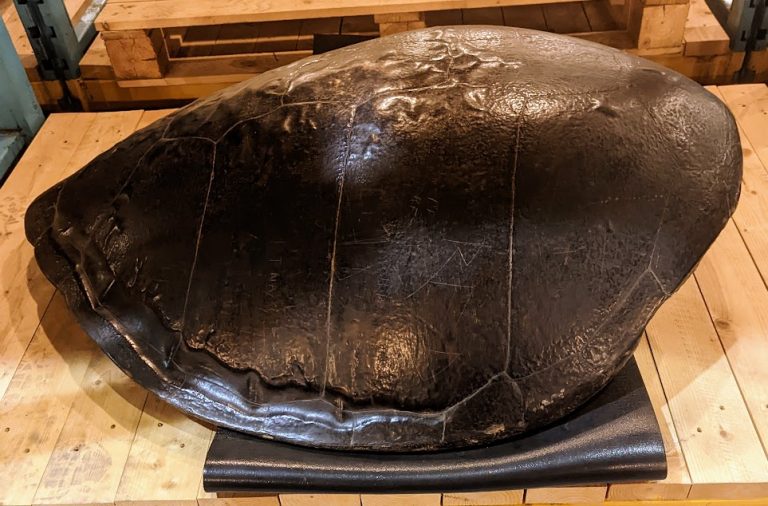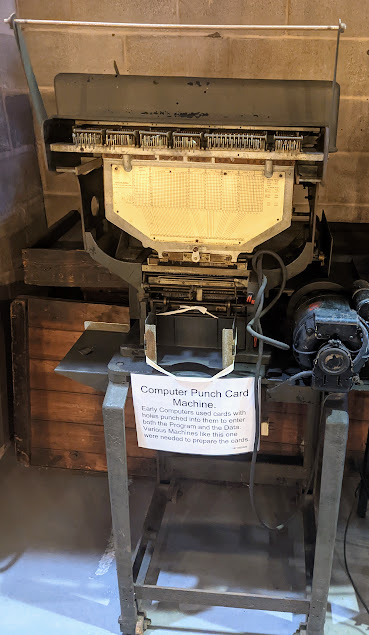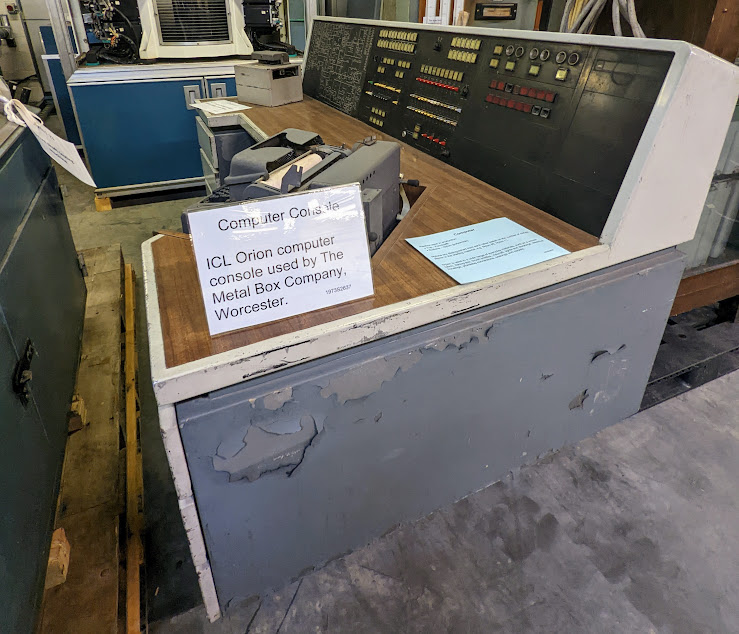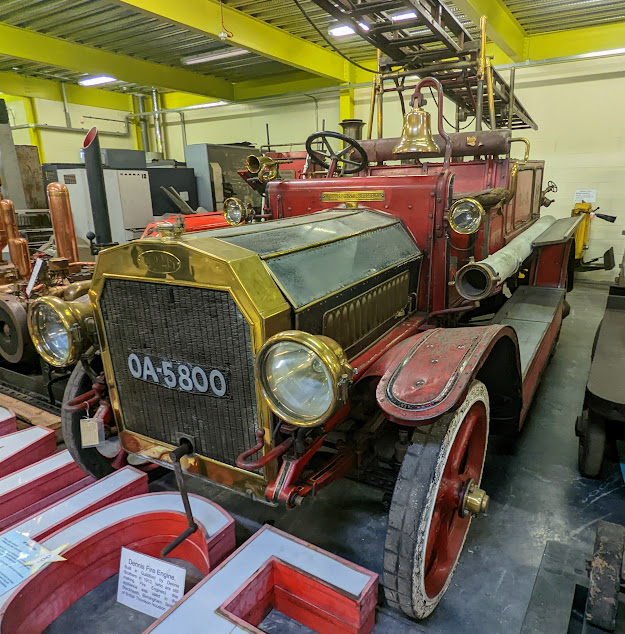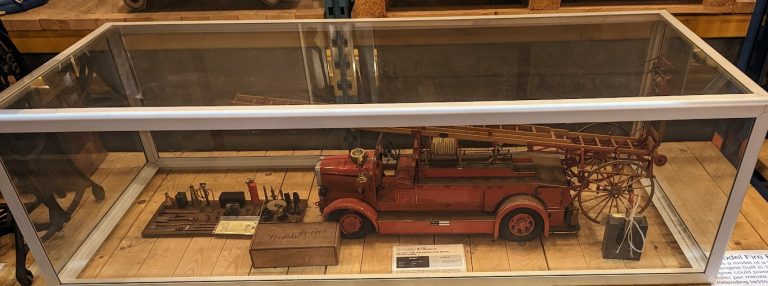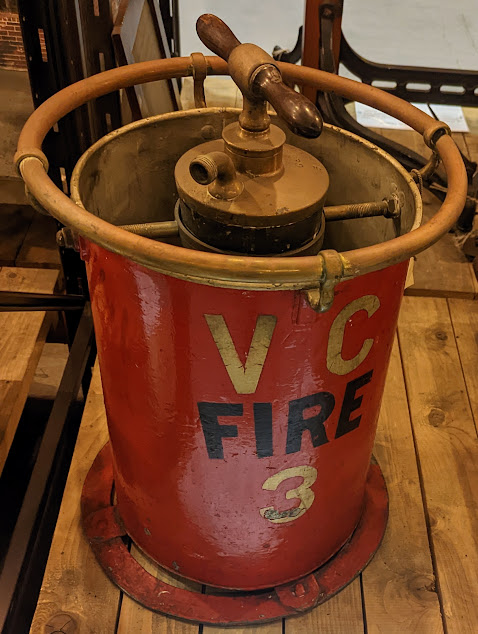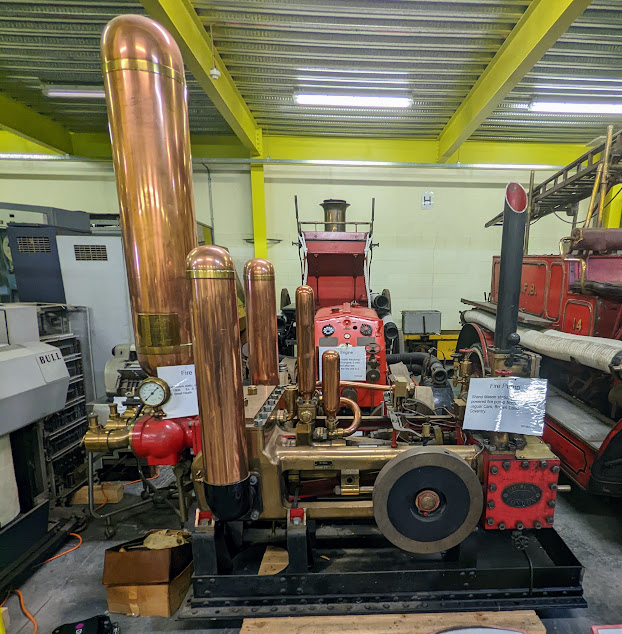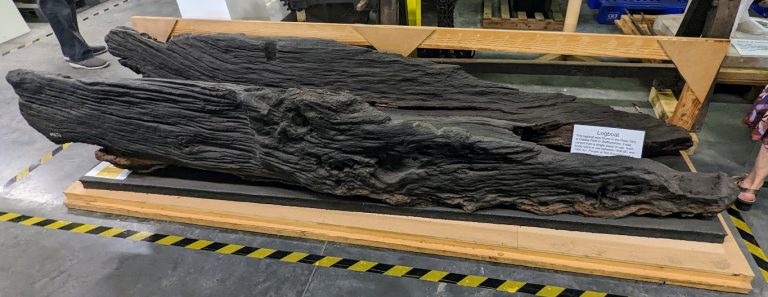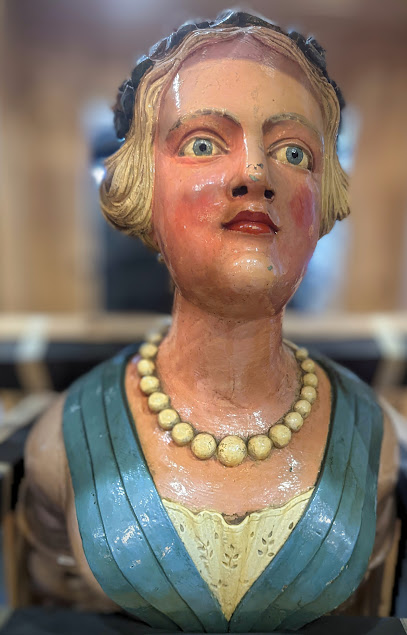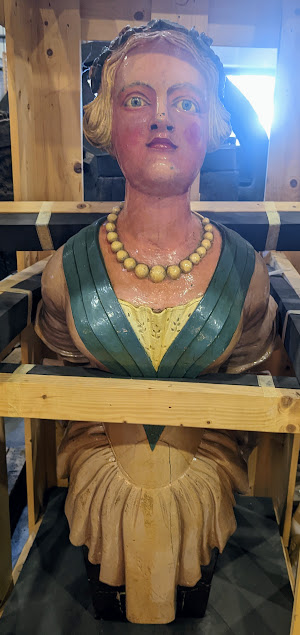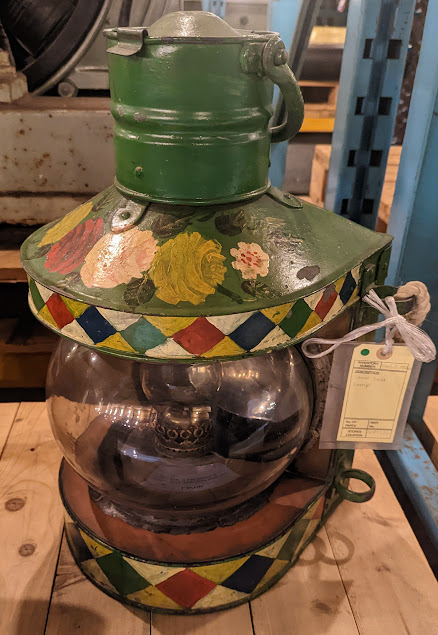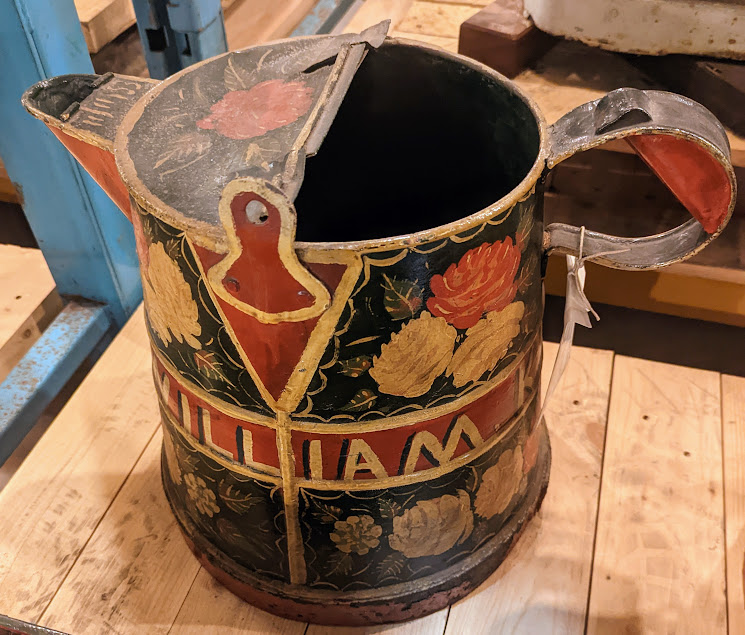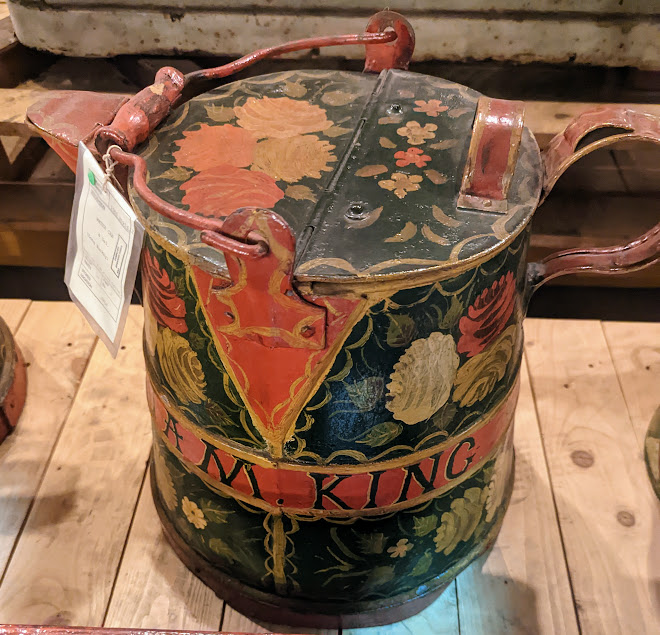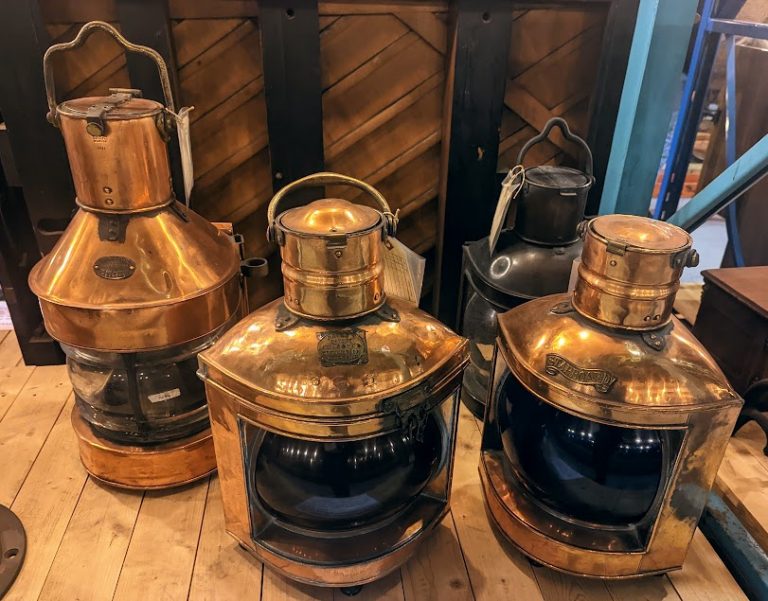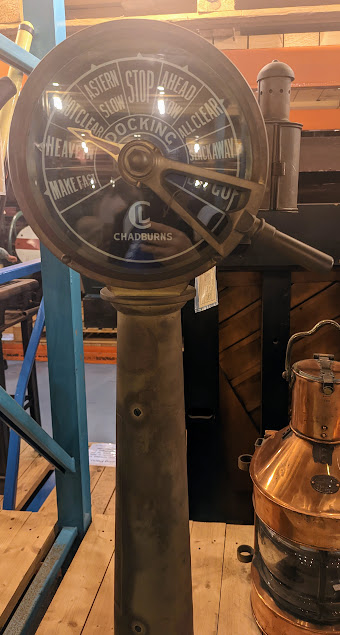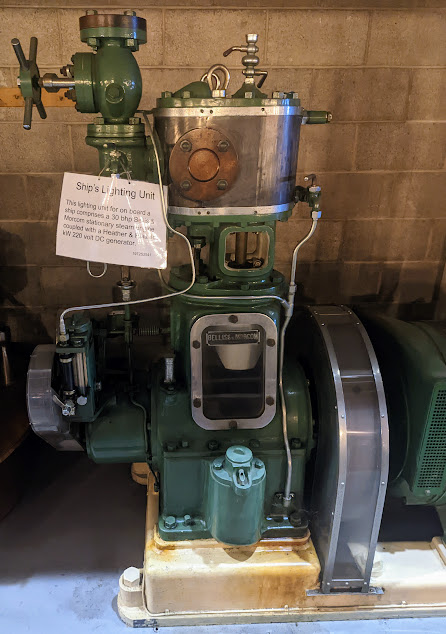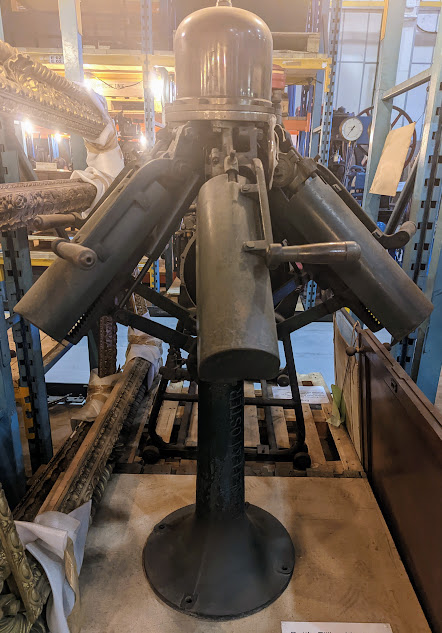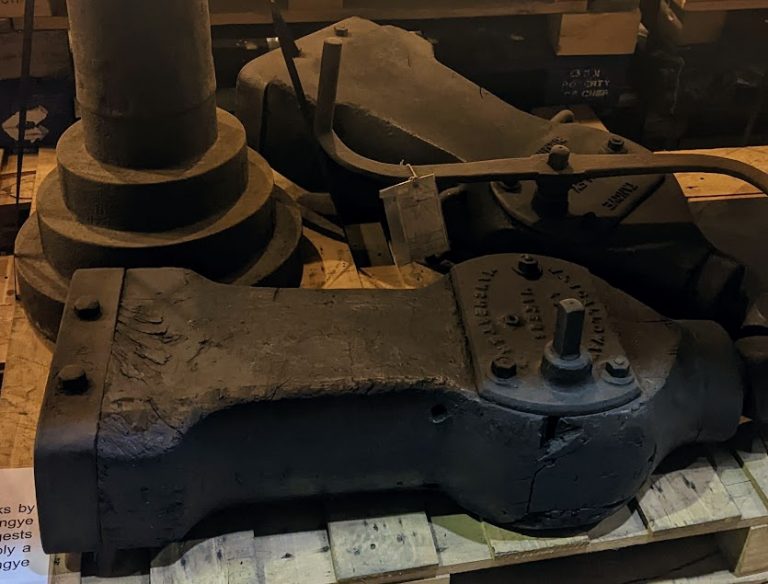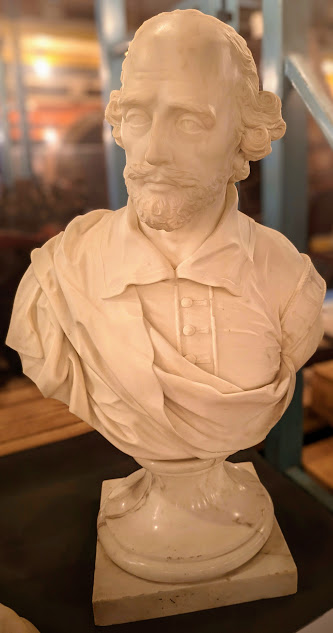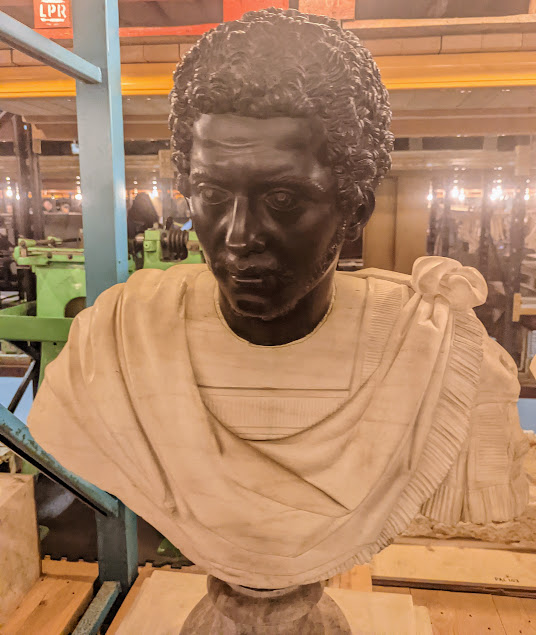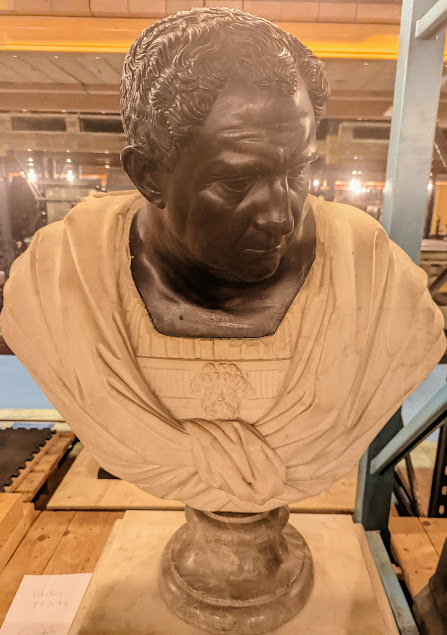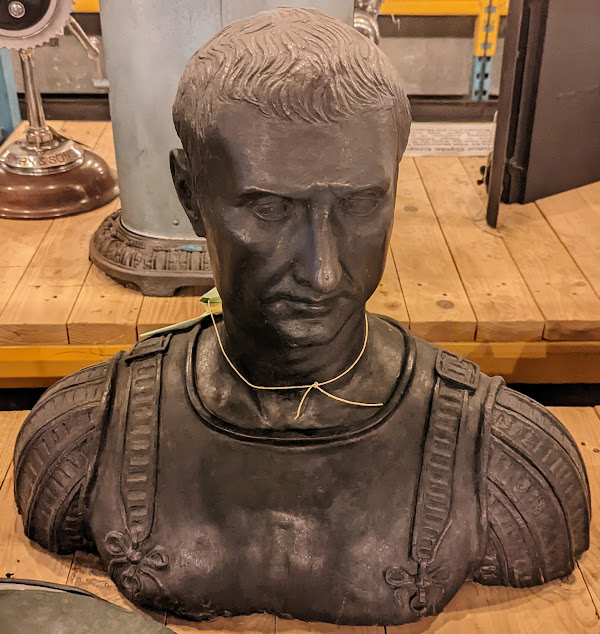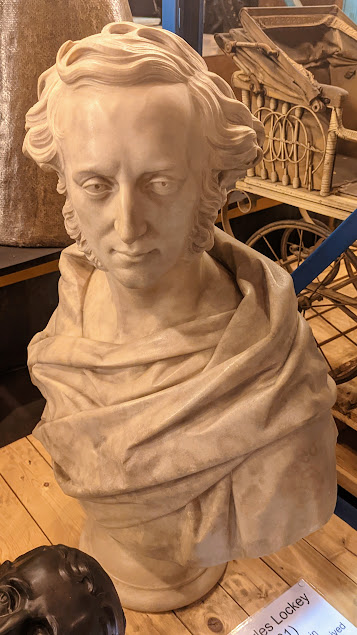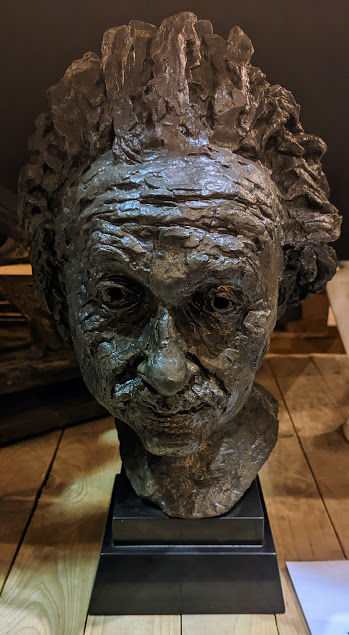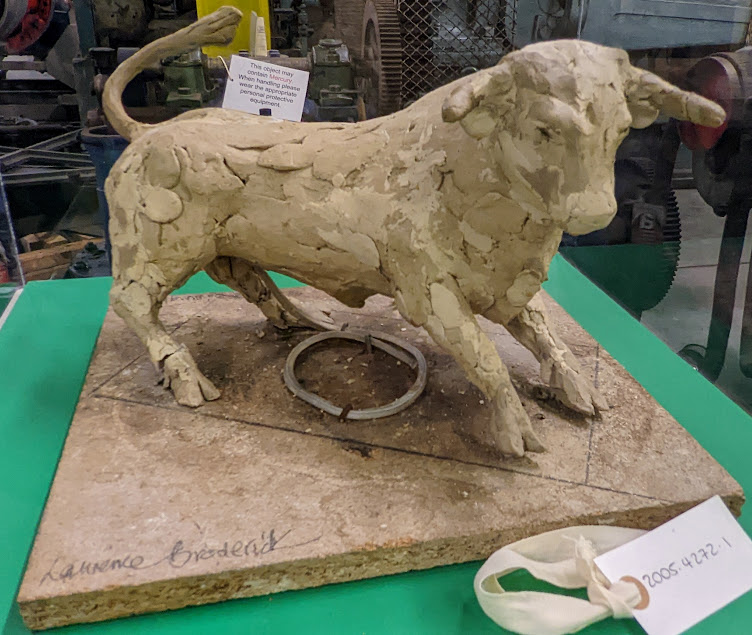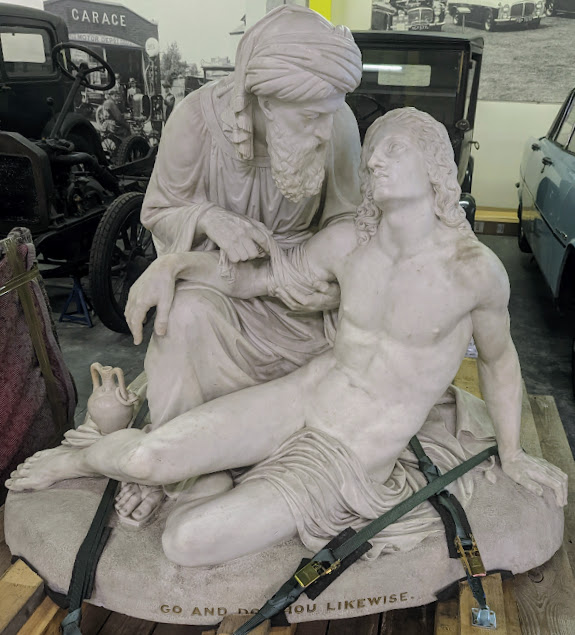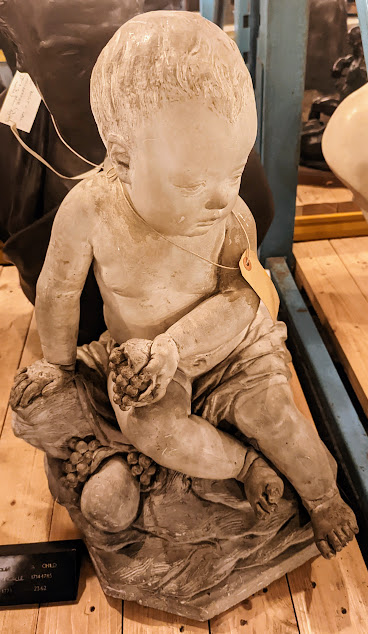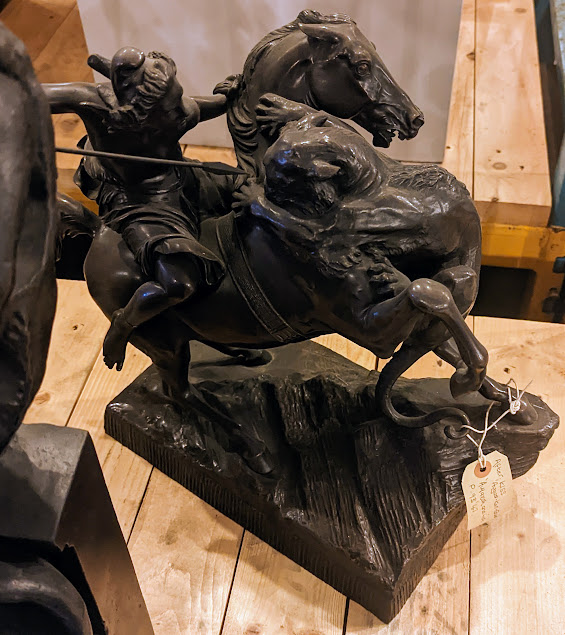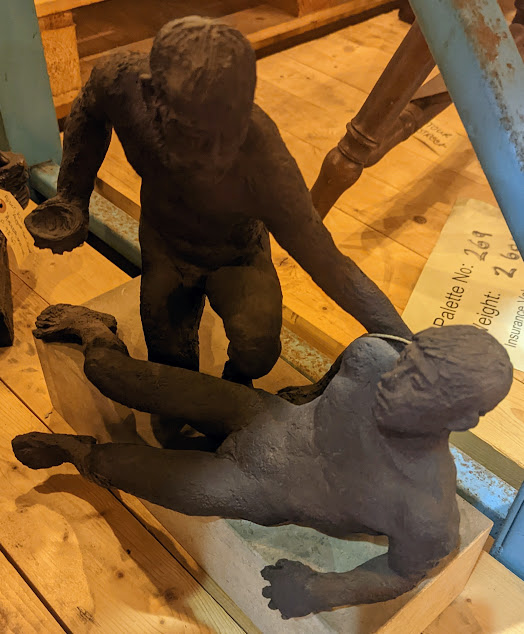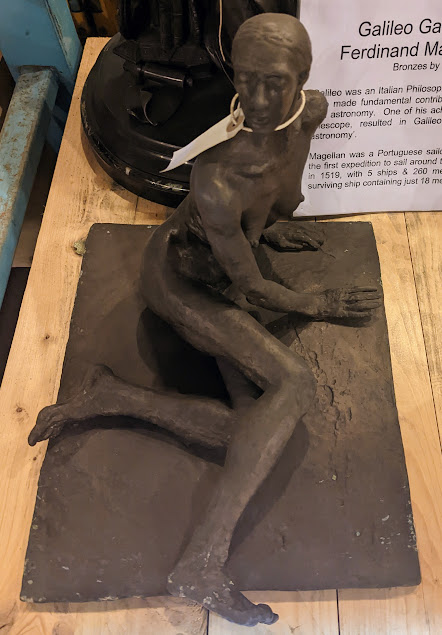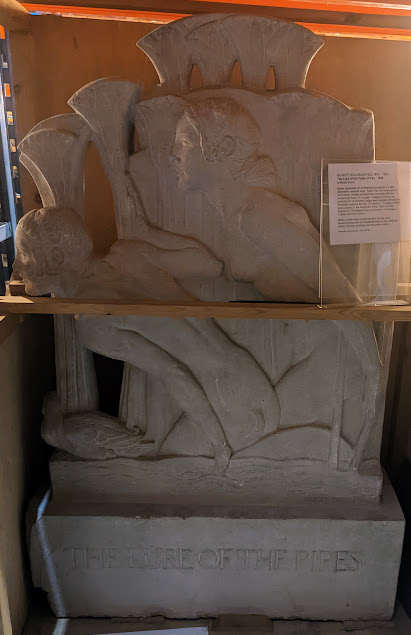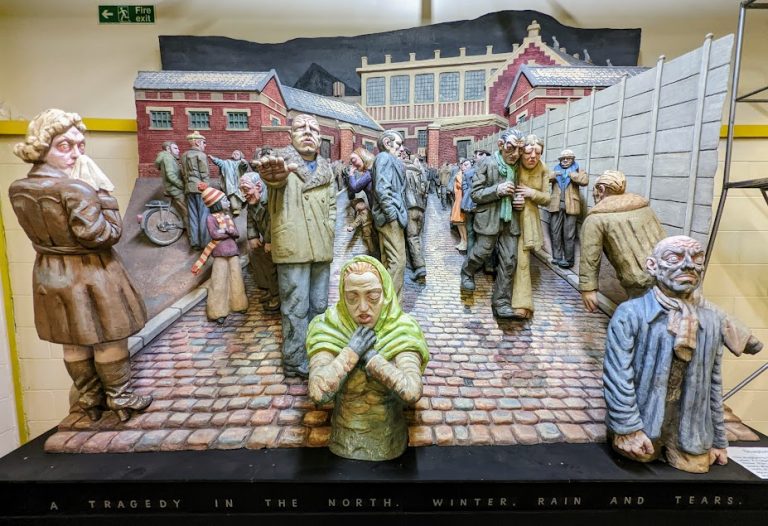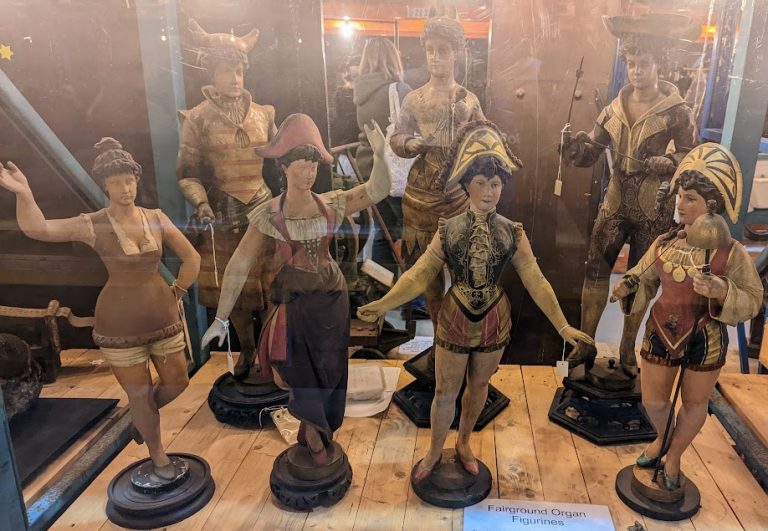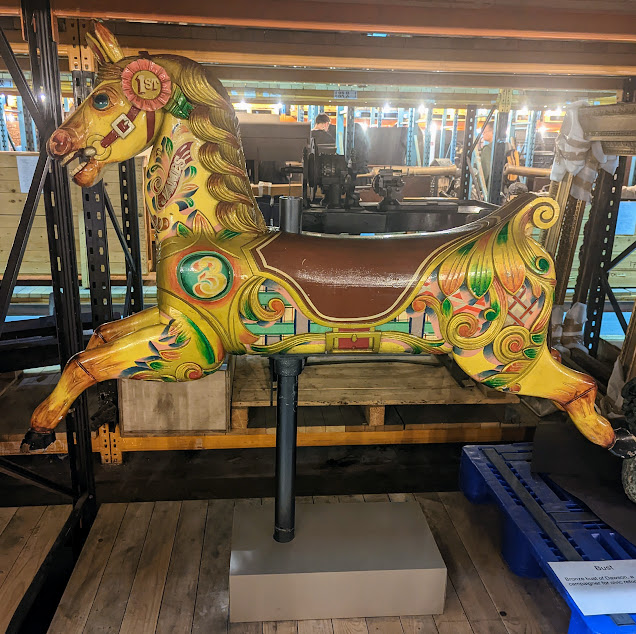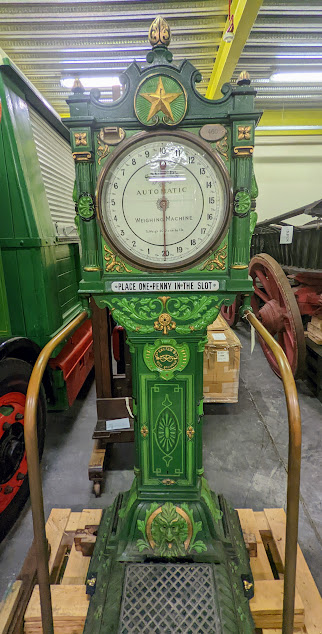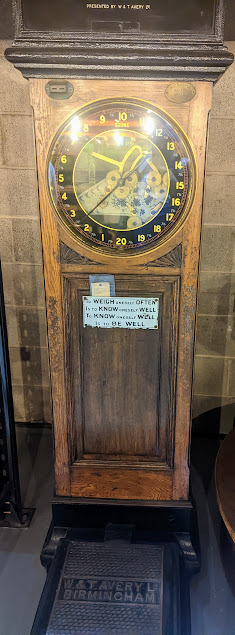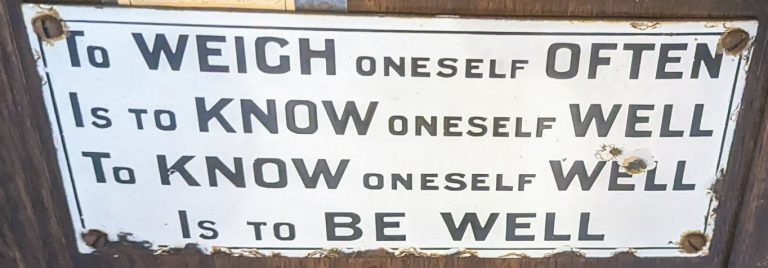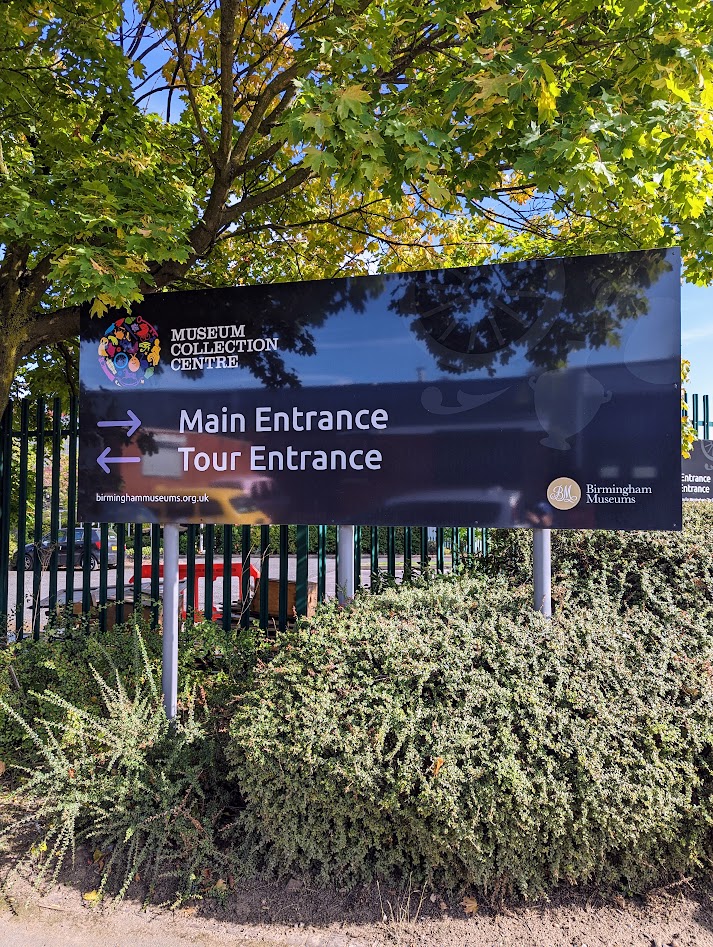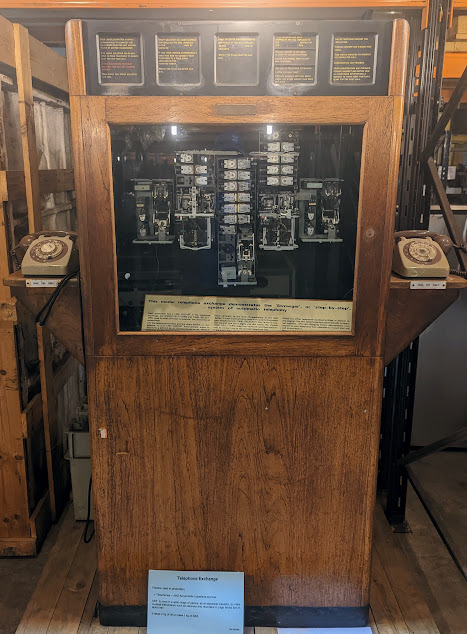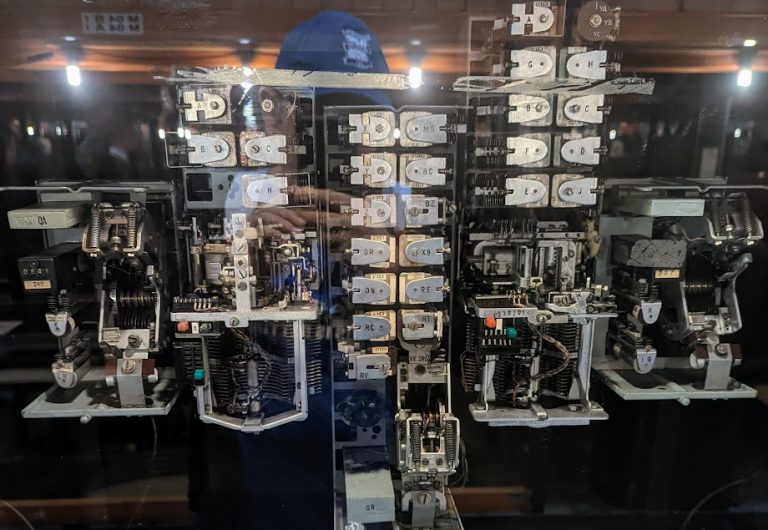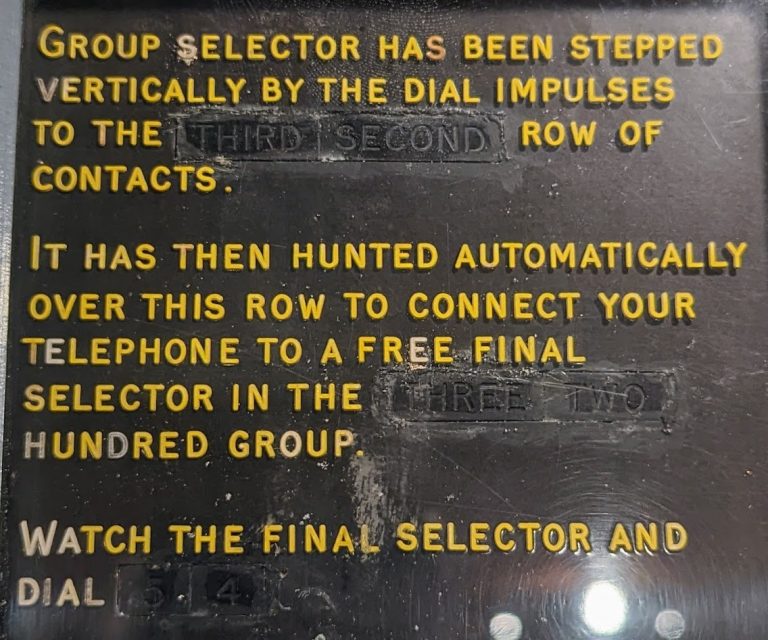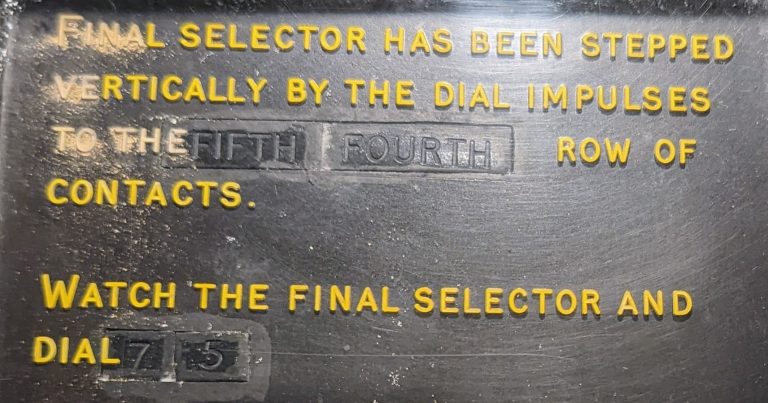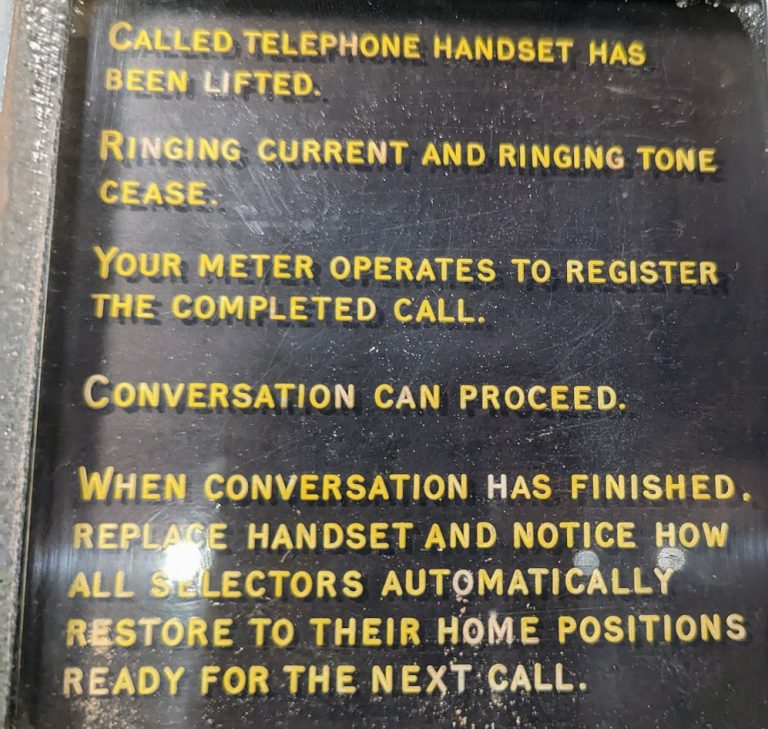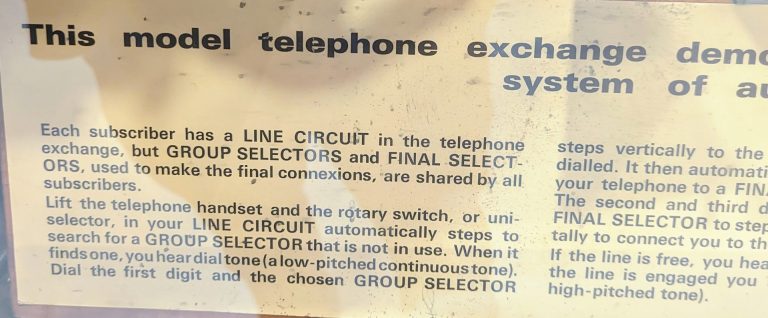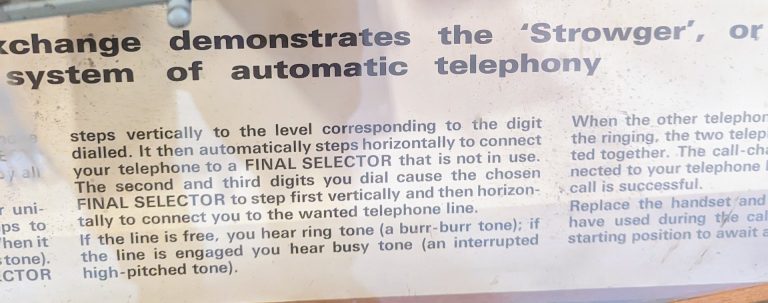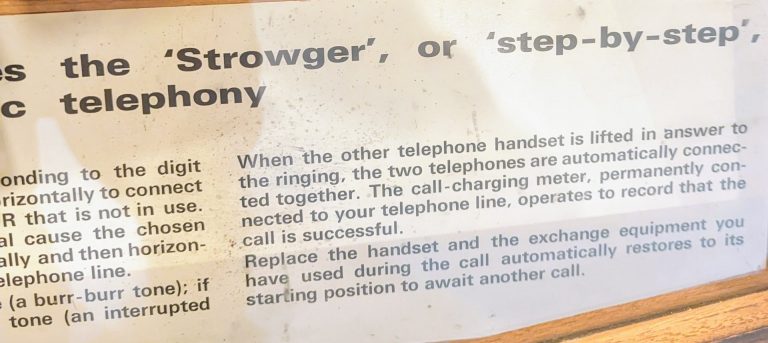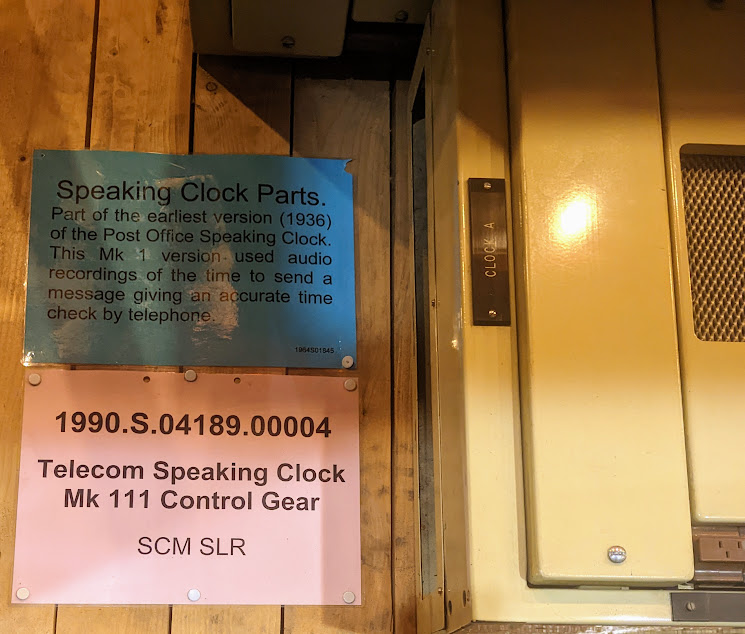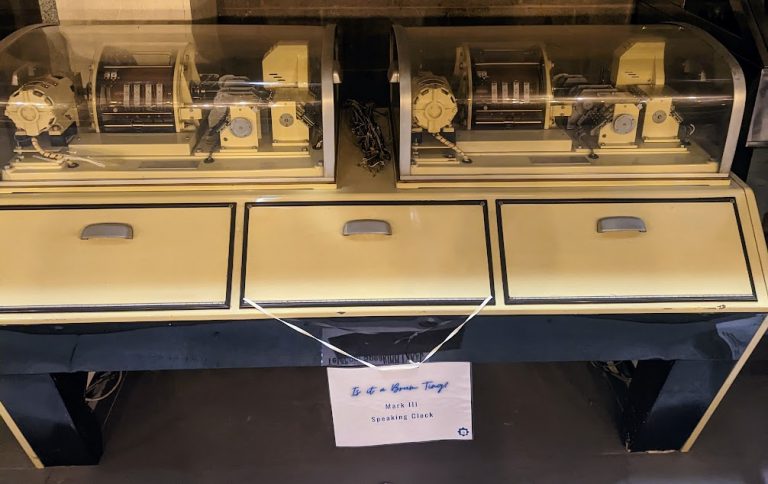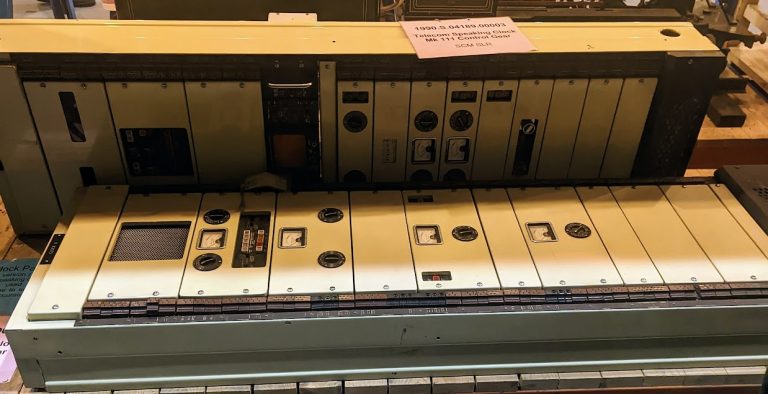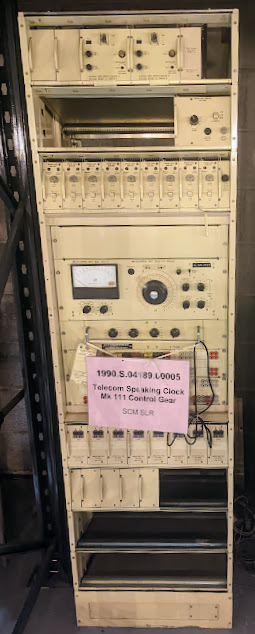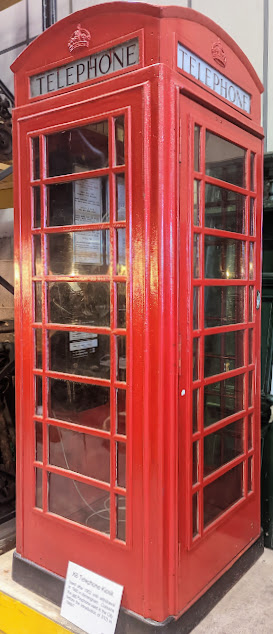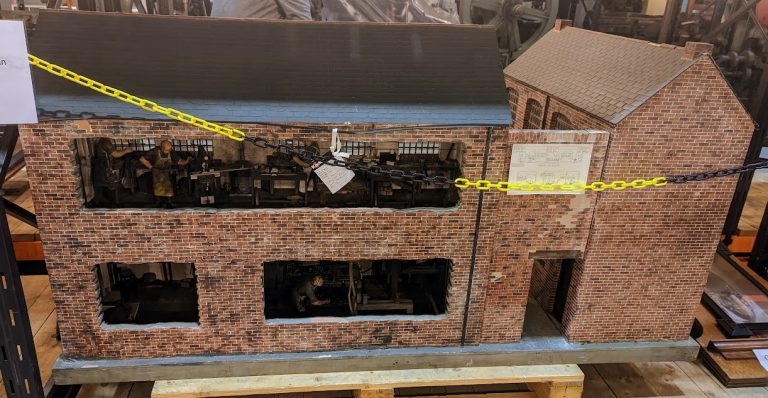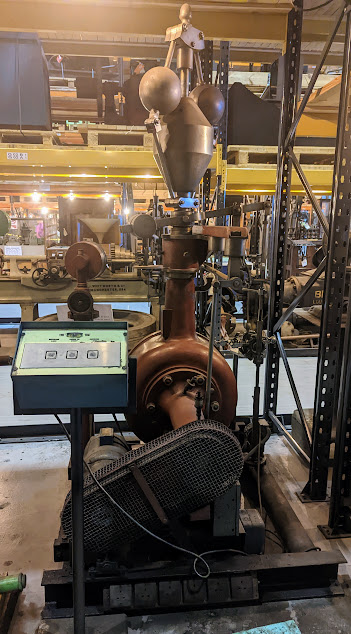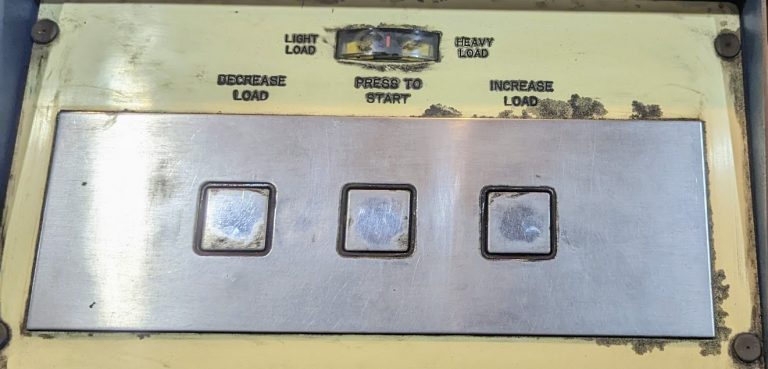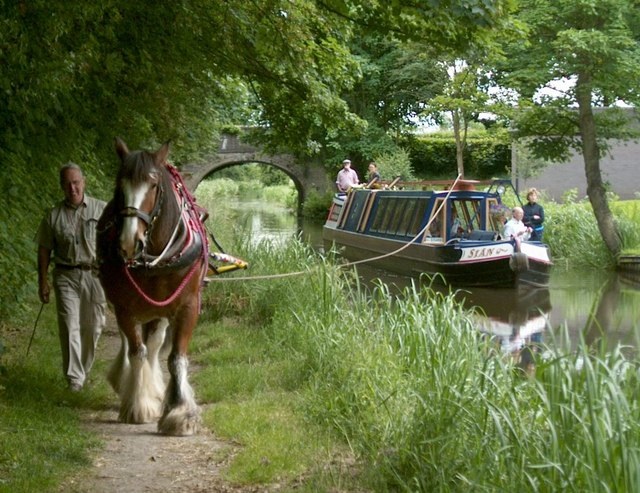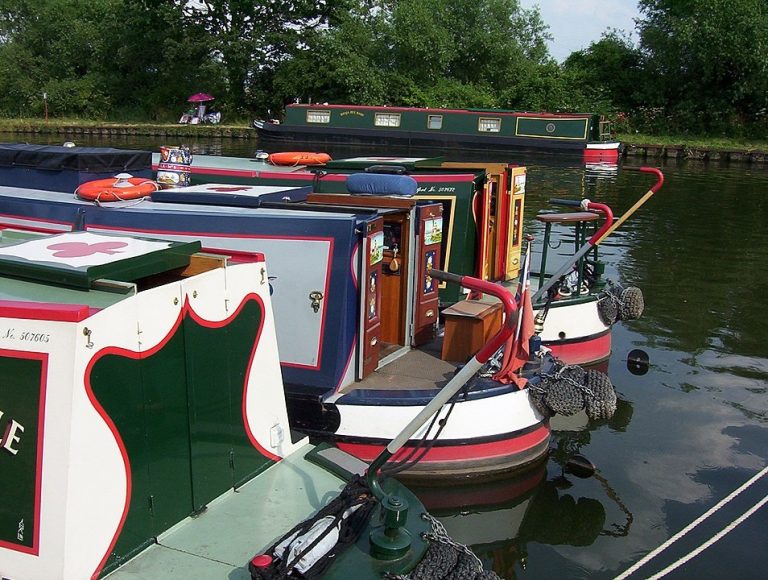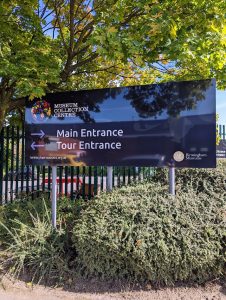
Here are more photos I took on my first visit to the Museum Collection Centre on 17/09/22.
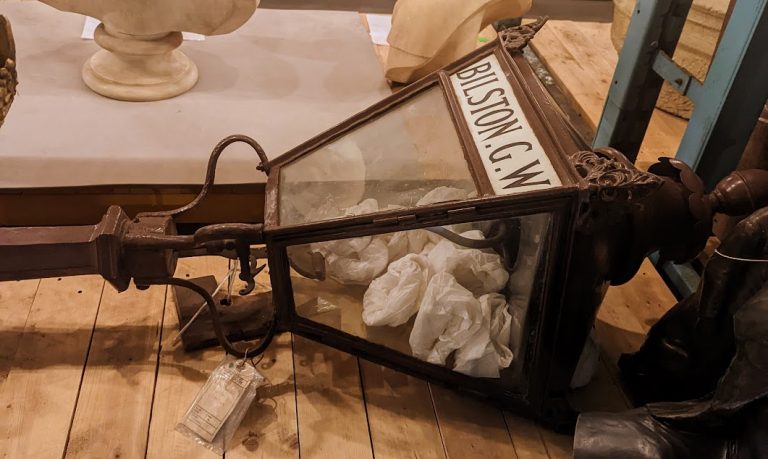
This gas lantern is from Bilston station.
Read about Bilston station here.
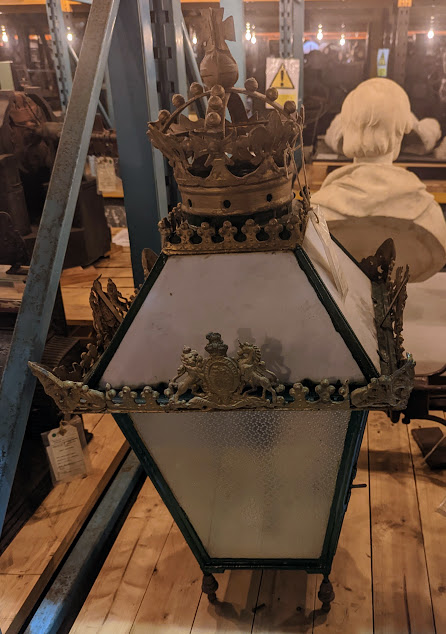
This gas lantern is from the station used by the royal family when they visited Sandringham.
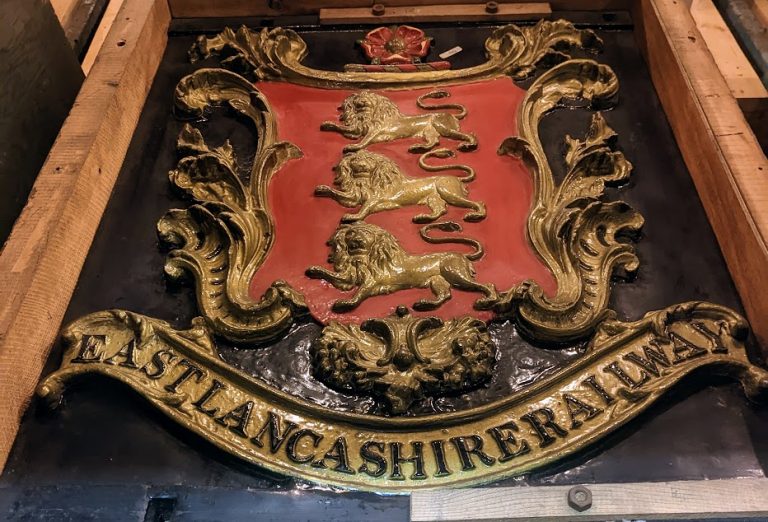
This cast iron plaque carries the crest of the East Lancashire Railway, which operated as an independent company in the Accrington, Blackburn and Burnley areas between 1844 – 1859.
Read about the East Lancashire Railway here.
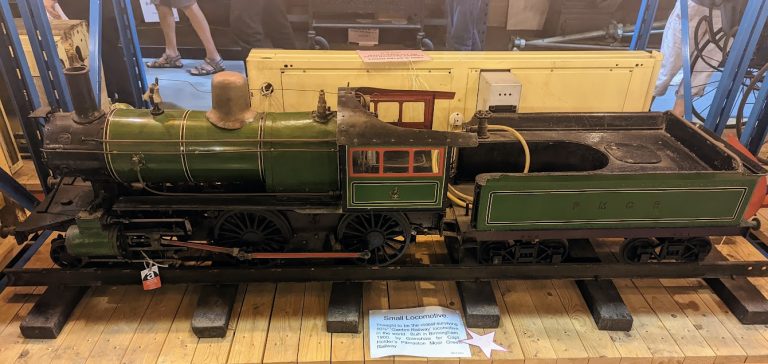
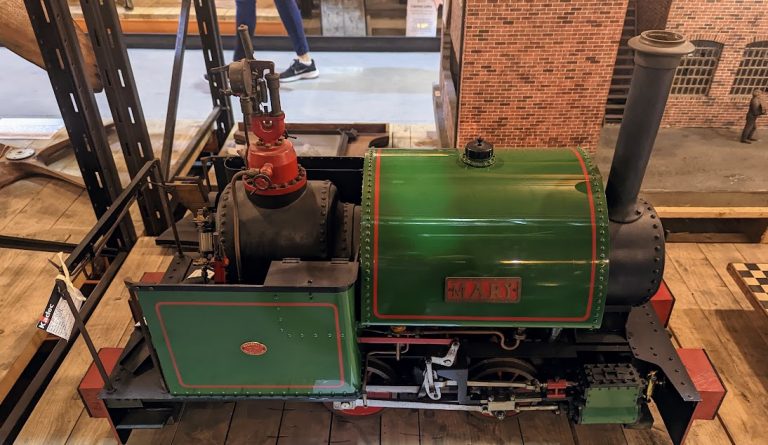
This is a model of the 0-4-0 locomotive Mary. The original was built by W.G. Bagnall Limited, Engineers, Stafford.
Read about W.G. Bagnall here.

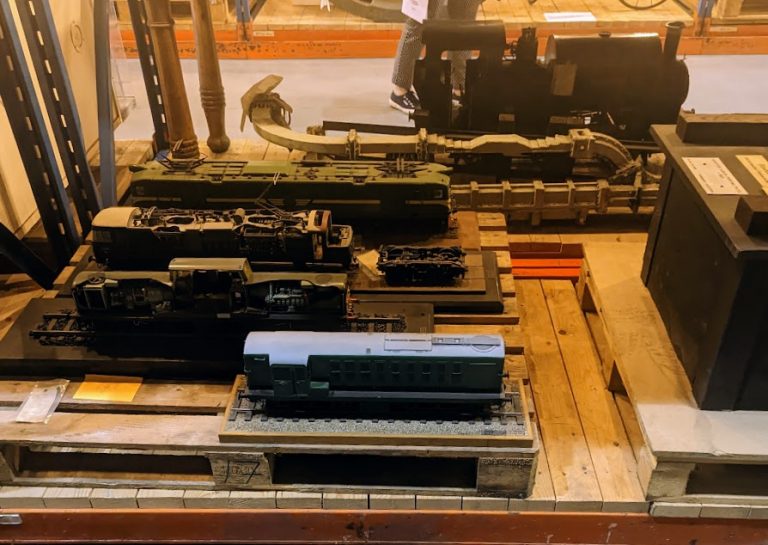
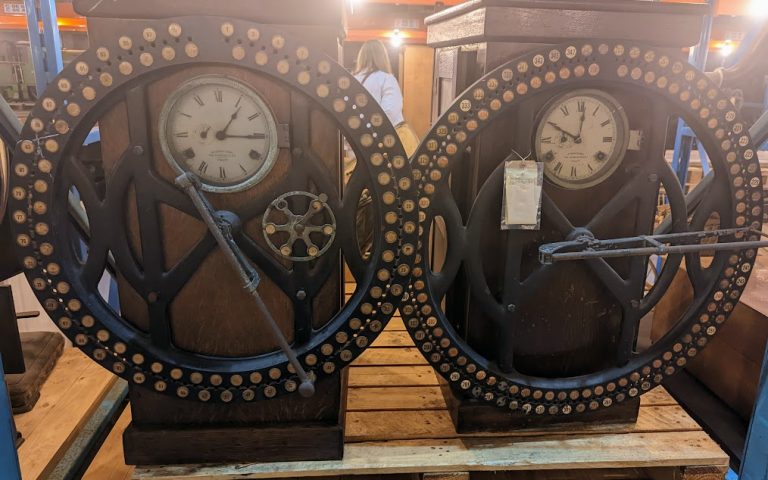
These two clocking-in machines were made by the International Time Recording Company around 1920. They were quite laborious to operate.
Read about the International Time Recording Company here.
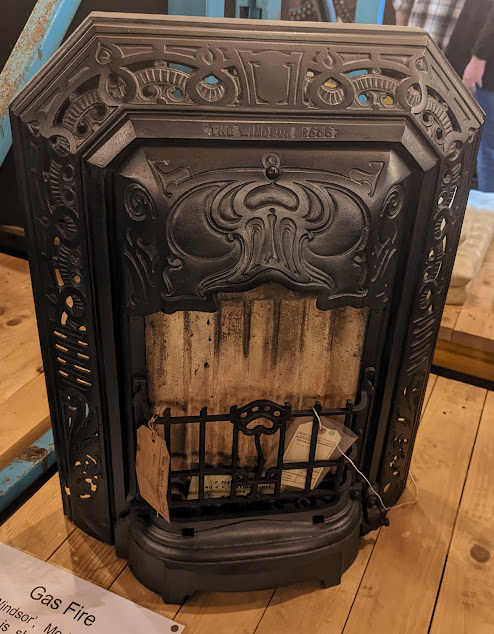
This Flavel Windsor, Model No. 536, Gas Fire is shown here without the ceramic elements which radiated the heat out into the room. This Fire is part of the West Midlands Gas Collection.
Read about Flavel here.
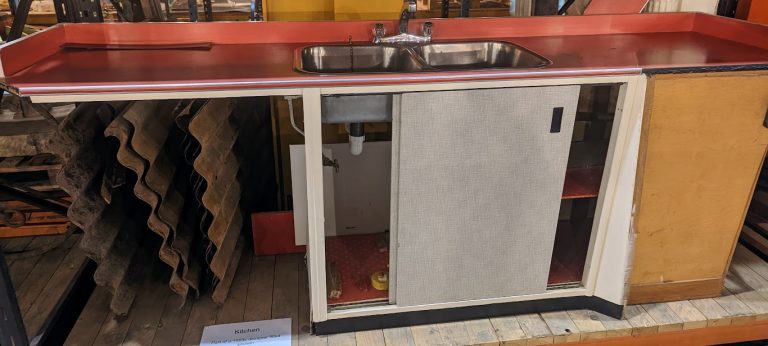
Part of a designer 1950’s fitted kitchen.
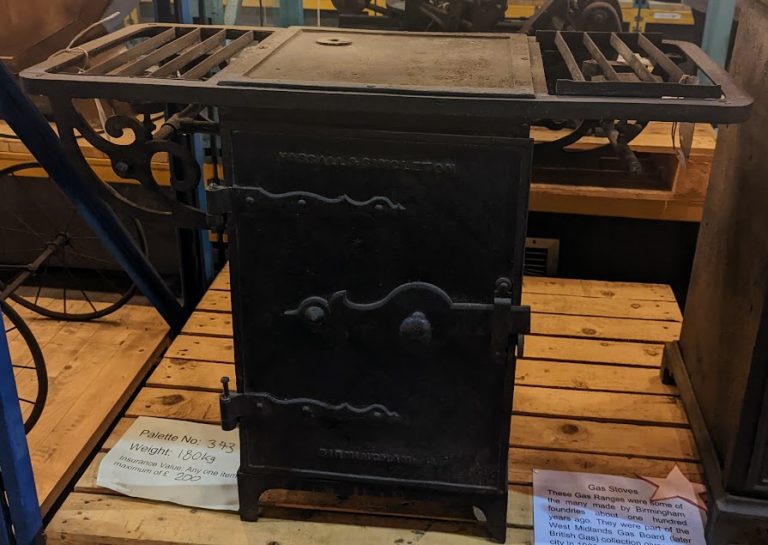
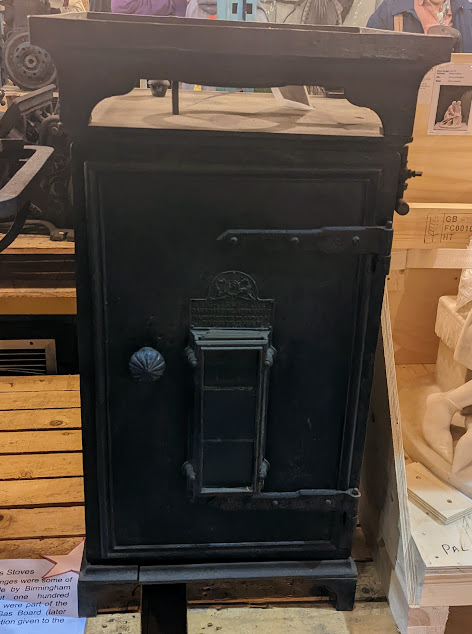
The two Gas Ranges above were some of the many made by Birmingham foundries about 100 years ago. They were part of the West Midlands Gas Board (later to become British Gas) collection given to the city in 1962.
Read about the West Midlands Gas Board here.
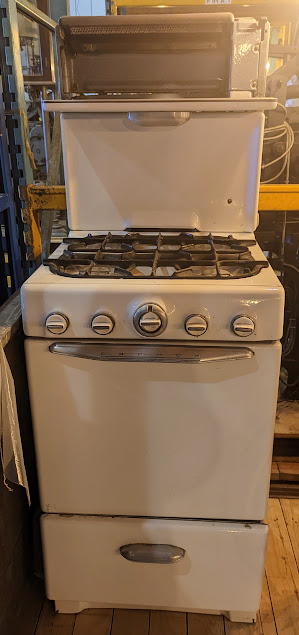
Cannon of Bilston in the West Midlands introduced their first gas cookers in 1895 and became a leading brand in this domestic kitchen appliance. This particular gas cooker style was in popular use by the 1950’s in homes across the country.
Read about Cannon here.
Washing Dolly
This is an early attempt at trying to make washing easier at a time before washing machines. The dolly was used to agitate laundry and placed in a tub with hot water and soap. This one was made in Tyseley, Birmingham.
Read about the washing dolly here.

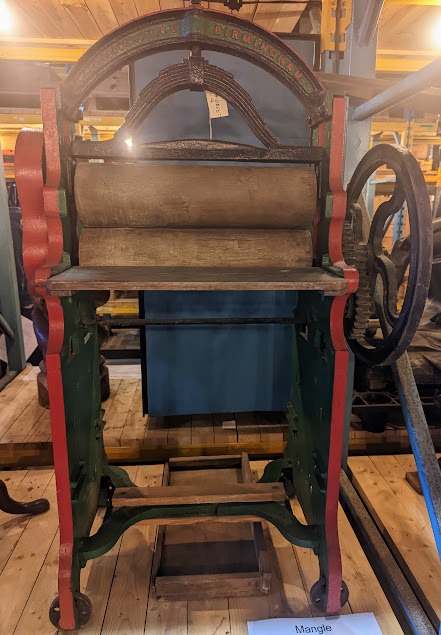
Before the 1950’s most houses had a mangle to domestically squeeze excess water from washed clothes. This one was made by F.J. Cocks, 6 Worcester Street, Birmingham.
Read about the Mangle here.
This mangle was made by J. Bentley of Birmingham and dates back to around 1875 – 1925.
Read about the Mangle here.
Mangles
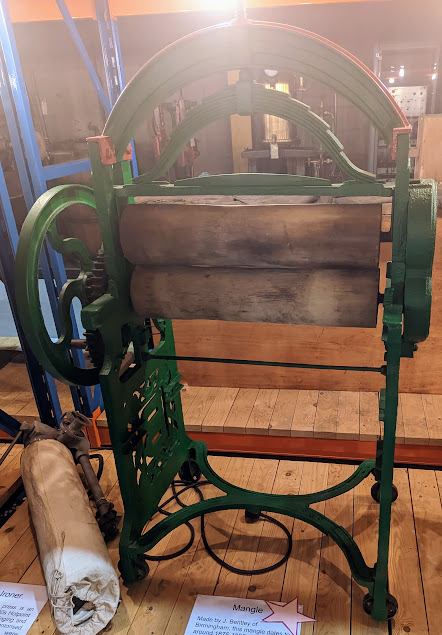
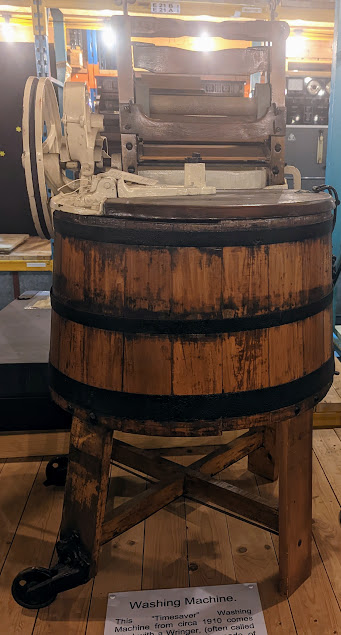
This Timesaver Washing Machine, circa 1910, comes fitted with a Wringer (also known as a mangle). It was principally made of wood. This machine came from the Stourbridge area.
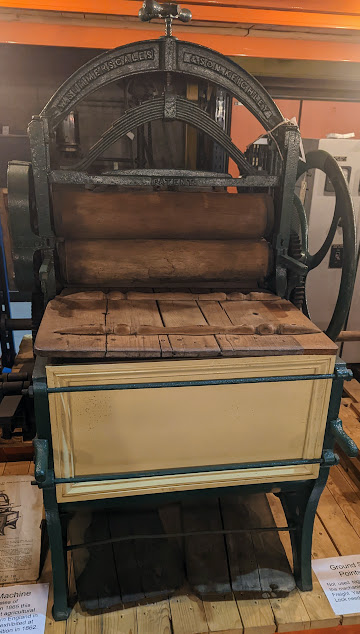
Made by W. Summerscales & Son (later to be changed to W. Summerscales & Sons) of Coney Lane Mills, Keighley, Yorkshire in 1865 this design won awards at agricultural shows around Northern England in the 1860’s and it was exhibited at the International Exhibition in 1862.
Read about W. Summerscales & Sons here.
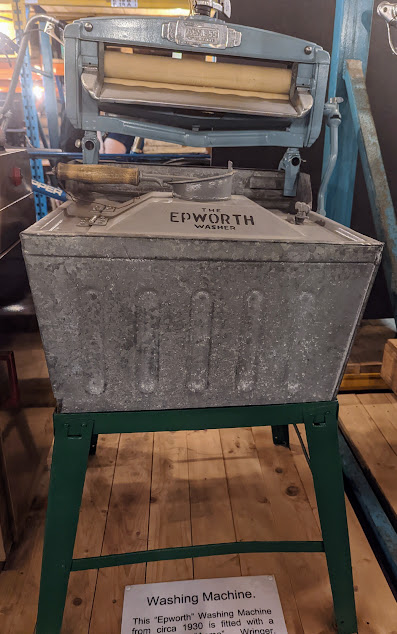
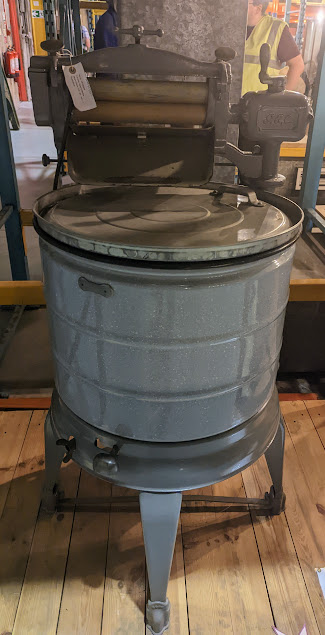
This machine was made in Birmingham by the General Electric Company (G.E.C.) in 1935. It was powered by electricity. The growing use of electricity both at home and at work ensured a great demand for G.E.C.’s products and the company expanded both at home and overseas.
Read about the General Electric Company here.
Blog Posts
Local History: The Museum Collection Centre.
The Museum Collection: Photos – Page 1.
The Museum Collection: Photos – Page 2.
The Museum Collection: Photos – Page 3.
The Museum Collection: Photos – Page 4.
The Museum Collection: Photos – Page 5.
The Museum Collection: Photos – Page 6.
The Museum Collection: Photos – Page 8.
Notes And Links
All the above images are copyright of Frank Parker.
Museum Collection Centre on Facebook.
Museum Collection Centre on Twitter.
Birmingham Museums Collection – Find out more about Birmingham’s collections including art and design, human history, natural science and science and industry categories. Each category contains sub-categories full of useful information and great photos.
Birmingham Museums Trust’s Digital Asset Resource – Official website. There is no registration or log-in required to use this website for out-of-copyright collection images Download free Public Domain image files up to 3mb in size with free Creative Commons licenses. You are entitled to unlimited downloads. Also download free Audio Files complete with a license. These can be downloaded for non-commercial use only and attribution is required.
BirminghamMAG – Official YouTube channel. Birmingham Museums and Art Gallery provide world-class museums at the cultural heart of Birmingham.
Birmingham Museums – Official website.
Thinktank: Birmingham Science Museum – Official website.
Birmingham Museum And Art Gallery – Official website.
Aston Hall – Official website.
Blakesley Hall – Official website.
Museum Of The Jewellery Quarter – Official website.
Sarehole Mill – Official website.
Soho House – Official website.
Weoly Castle – Official website.
Wikipedia – Official website. This is a free encyclopedia that anyone can edit.
Grace’s Guide – Official website. This is the leading source of historical information on industry and manufacturing in Britain. This web publication contains 149,969 pages of information and 235,611 images on early companies, their products and the people who designed and built them.
